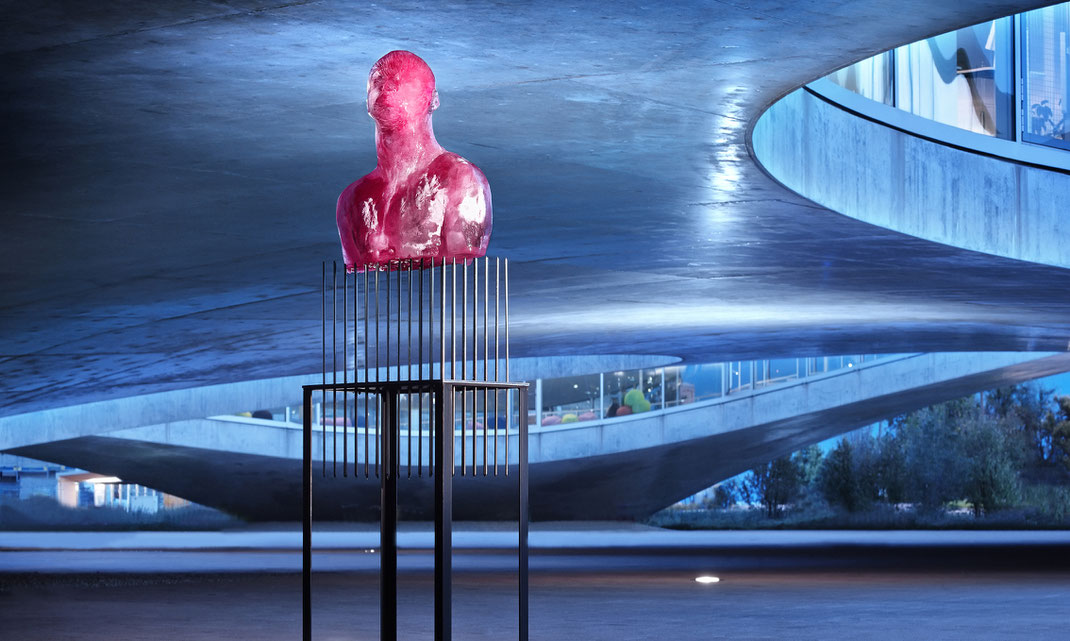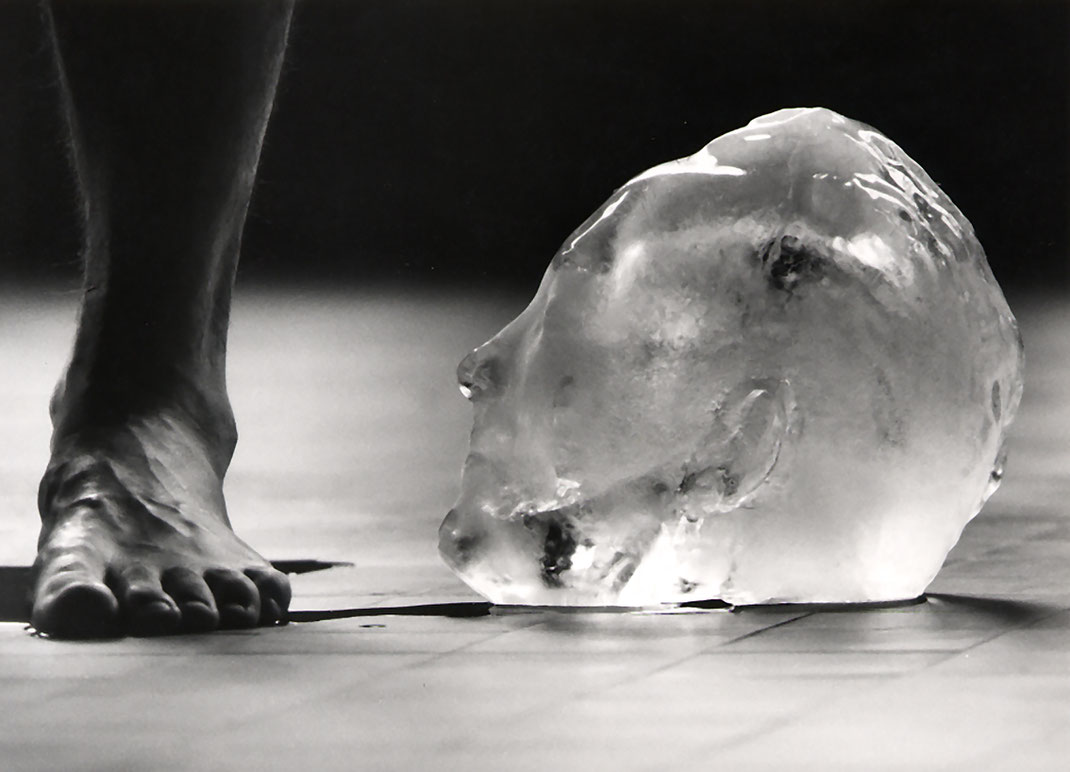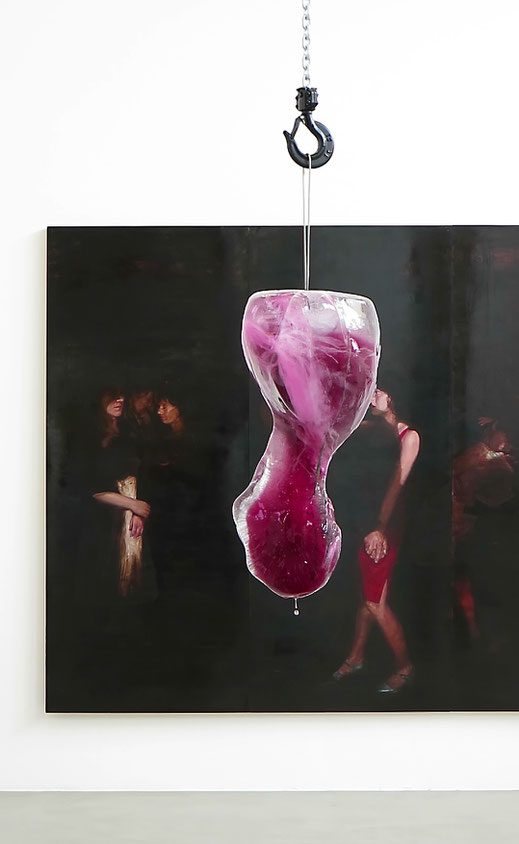- Current projects
- Selected Works
- Häutungen und Metamorphosen
- Ex vivo - in vitro
- Sammlung Reinking Hamburg 2011
- Kunstmuseum Bern 2013
- Kunsthaus Zofingen 2017
- Mess Up Your Mind
- Mon crâne retrouve son propre visage
- Kunstgeschichte kitzelt
- Ataraxie & Eudaimonia
- Choreography Bern Ballett 2007
- Kunsthalle Bern 2006
- Aargauer Kunsthaus 2021
- Ali Baba und die 40 Kunstkritiker
- Alphons Silbermann 1999
- Art and War 2003
- Weserburg Bremen 2014
- Kunstverein Ruhr 2015
- Echo and Narcissus 2012
- Facing History 2019
- Rede mit mir
- The Artist
- Bibliography
- Lectureships
- Contact
Swiss contemporary artist Frantiček Klossner is active across disciplines in the fields of video art, sculpture, installation, drawing and visual poetry. In his works he combines the means of expression of the visual arts with those of the performing arts. His entire artistic oeuvre is permeated by existential questions. In it, the human body acts as a representative for the processes of mental individuation and social interdependencies. Among his best-known groups of works are the "Melting Selves". The self-portraits frozen in ice tell in a poetic and haunting way what his art is about: the metamorphoses of life, the ego in transition, the interactions between external and internal forces. The vehemence of his visual language invovlves the audience to question inner images and to examine their own thinking. With his diverse works, which often seem like scientific experimental setups exploring the delicate membranes between body and space, seeing and thinking, Frantiček Klossner is one of the most important and productive representatives of the Swiss media art scene.
Since 1990, his works have been represented internationally in exhibitions and as part of media art festivals. Solo exhibitions dedicated to him include Kunsthaus Grenchen, Switzerland (2001), Centro d'Arte Contemporanea CACT, Bellinzona, Switzerland (2002), Museo de Arte Moderno de Buenos Aires MAMBA, Argentina (2004), the Galeria de Arte Universal, Santiago de Cuba (2005), the Centro de Expresiones Contemporáneas, Rosario, Argentina (2007), the Kunstmuseum Solothurn, Switzerland (2008), the Kunsthaus Interlaken, Switzerland (2013), the Kunsthalle Wil near St. Gallen, Switzerland (2014), and the Kunstverein Ruhr in Essen, NRW, Germany (2015).
Frantiček Klossner completed his artistic training at the School of Art and Media Design F+F in Zurich (1985-1989) where artists such as Hansjörg Mattmüller, Valie Export, Morgan O'Hara, Hermann Bohmert, Norbert Klassen, Vollrad Kutscher, Peter Weibel and the cultural philosopher Gerhard J. Lischka taught. During this time, he was influenced by the regular guest lectures by contemporary philosophers such as Paul Virilio, Jean Baudrillard, Vilém Flusser, and Niklas Luhmann at the Bern Museum of Fine Arts under the direction of Jean-Christophe de Tavel.
After graduating, he received an art scholarship from the city of Bern, which enabled him to move into a studio in the East Village in New York City. There he focused on video art, performance and installations. These new works received much attention in the first exhibitions in Switzerland and Germany, which were important for him. In 1992 his work was awarded the Louise Aeschlimann and Margareta Corti Scholarship by the Bern Art Society. Three years later followed an invitation to the residency program at the Swiss Institute in Rome. After a two-year studio residency at the Istituto Svizzero (1996-1998), he settled in the city of Rome, where he remained until 2000. After his return to Switzerland, he directed the exhibition project "Identité mobile" for the Swiss National Exhibition Expo02 and participated in the Styrian National Exhibition in Graz with a public analysis of his own genes "Remastered Remix Identity".
Parallel to his independent artistic career, the artist was also involved early on as a curator and initiator for the promotion of media art and performance art in Switzerland. In 1987, together with Norbert Klassen and Janet Haufler, he founded the performance group STOPPT. Together with the group, he coordinates the international "Performance Art Network" in the former Lydia Megert Gallery from 1989 to 1990. In 1992 he founds the festival for video art "Peep Art" in Bern, which he directs until 1996. In 1995 he curates the exhibition "Always Online" at the Stadtgalerie Bern and together with Gerhard J. Lischka and Boa Baumann he founds the "Performance Video Computer Clip Club" to promote media art. From 2006 to 2009 he curates the "Valiart Kulturraum für Medienkunst" and initiates a multi-year program for performance art at the Haus der Universität Bern. Frantiček Klossner is active in several contemporary art associations and in two Swiss cultural foundations.
His teaching activities at Swiss art colleges began in 1993 with a first teaching assignment for video art at the F+F Kunstschule in Zurich. He taught there until 2000 and, together with Thomas Gränicher, established the course for new media. After working for Expo.02, he took on further teaching assignments at the Kunsthochschule Nordwestschweiz FHNW (Department of Media Art in Aarau) and at the École cantonale d'art du valais ECAV. Since 2006 he teaches at the Institute for Transdisciplinary Art at the Bern University HKB.
In 2017, the artist launched a new educational project for professional schools in the fields of caregiving professions: «Art and Medicine / Culture and Care» was awarded as a particularly innovative and exemplary project and implemented with great public resonance at several Swiss universities of applied sciences. The artist sees the project as a "social sculpture" (art that changes society / in the sense of Joseph Beuys) to draw attention to the political and economic causes of the health workforce crisis in Europe. In 2021, the Musée de la main UNIL-CHUV in Lausanne dedicated a major special exhibition to the project: «ART & CARE - Carte blanche for those who take care of us».
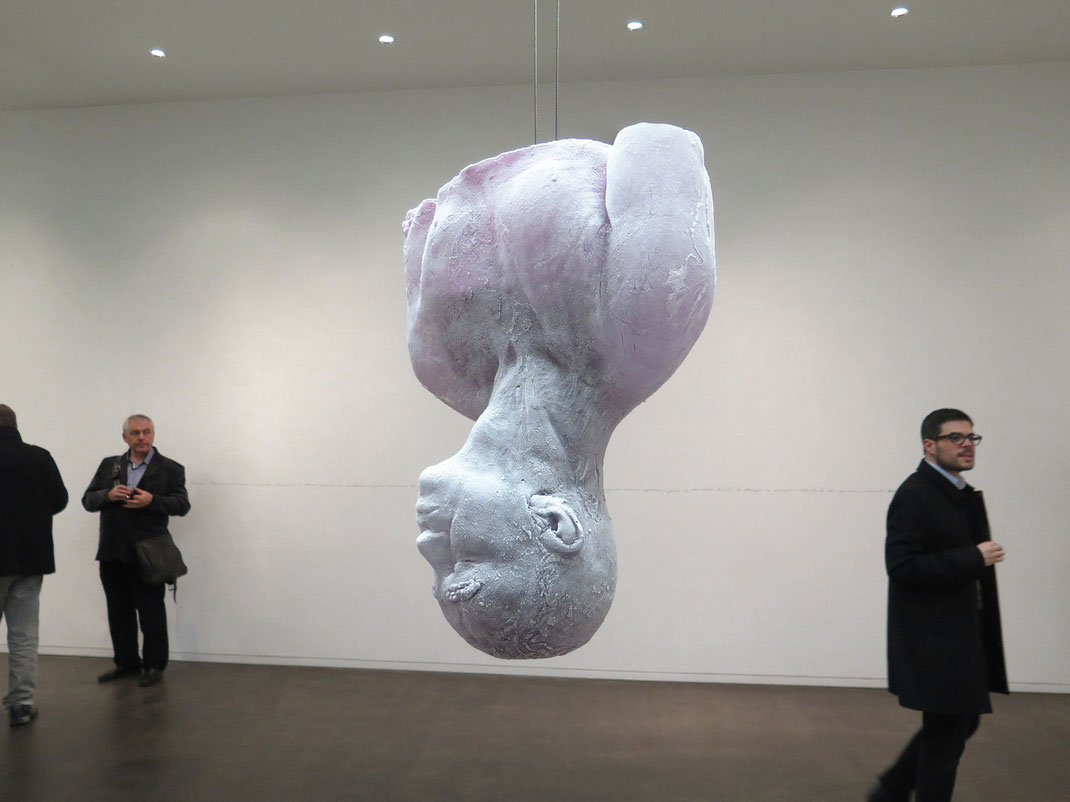
Museums and Public Art Collections
Works by Frantiček Klossner are represented in numerous public art collections: Swiss National Museum, Kunsthaus Zürich, Reinking Collection Hamburg, Moses Mendelssohn Foundation Berlin, Federal Art Collection of the Swiss Confederation, Carola and Günther Ketterer-Ertle Art Collection, Musée d'art et d'histoire Fribourg MAHF, Prints and Drawings Collection of the Swiss National Library, Museum of Fine Arts Berne, Neuer Berliner Kunstverein, Ursula Blickle Videoarchiv, Österreichische Galerie Belvedere Wien, Center for Art and Media ZKM Karlsruhe, Tomarkin Collection Berlin, Museo de Arte Moderno de Buenos Aires MAMBA Argentina, Museum of Fine Arts Solothurn, Art Collection of the Canton of Bern, Art collection of the city of Zofingen, Arts Center Pasquart Biel-Bienne, Mobiliar Art Collection, Banque Bonhôte Neuchâtel Art Collection, Swiss Institute in Rome
Awards / Honors
2018 Network Honorary Award
2017 Winner of the competition "Kultur.Digital", Canton of Bern
2009 Art Position Award, Canton of Vaud
2009 Valiant Bank Media Art Award
2007 Grant from the Cultural Fund, Federal Office of Culture
1999 Nomination for the Böttcherstrasse Award, Bremen
1997 Grant from the UBS Foundation for Culture
1997 Video Art Award, Thuringia and Rhineland-Palatinate
1996 Member of the Swiss Institute in Rome
1992 Art Award of the Aeschlimann-Corti Foundation
1991 New York Studio Grant by the City of Bern
Education and Training
Frantiček Klossner trained as an artist at the F+F School of Art and Design in Zurich (1985–1989), among whose teachers were the artists Hansjörg Mattmüller, Hermann Bohmert, Norbert Klassen, Vollrad Kutscher, Valie Export, Peter Weibel, and the philosopher Gerhard J. Lischka, and among whose guest lecturers were Jean Baudrillard, Paul Virilio, and Vilém Flusser. On graduating, he won a City of Bern art scholarship, thanks to which he was able to move into a studio in the East Village in New York City and there focus on video art, performance, and installations. In 1995 he became a member of the Swiss Institute in Rome. After the two-year studio stay at the Institute, he settled in the eternal city, where he remained until 2000. On returning to Switzerland, he headed the exhibition project Identité mobile at the Murten arteplage of the Swiss National Exhibition, Expo.02.
Exhibitions
Since 1990, Klossner’s art has featured regularly in international exhibitions and media art festivals. Among the institutions to stage solo exhibitions of his work are the Kunsthaus Grenchen, CH (2001), Centro d’Arte Contemporanea, Bellinzona, CH (2002), Museo de Arte Moderno de Buenos Aires MAMBA, ARG (2004), Galeria de Arte Universal, Santiago de Cuba, CUB (2005), Centro de Expresiones Contemporáneas, Rosario, ARG (2007), Kunstmuseum Solothurn, CH (2008), Kunsthaus Interlaken, CH (2013), Kunsthalle Wil, CH (2014), and Kunstverein Ruhr in Essen, NRW, D (2015).
Teaching
From 1993 to 2001, he co-founded the Department of New Media at the F+F School of Experimental Design in Zurich and taught performance and video art. After the Swiss Expo.02 he was invited to lecture in media art at the Fachhochschule Nordwestschweiz FHNW and in performance art at the École cantonale d’art du Valais ECAV. In 2006 he took on a teaching position at the Bern University of the Arts HKB, where he has since taught at the Institute for Transdisciplinary Art and Research.
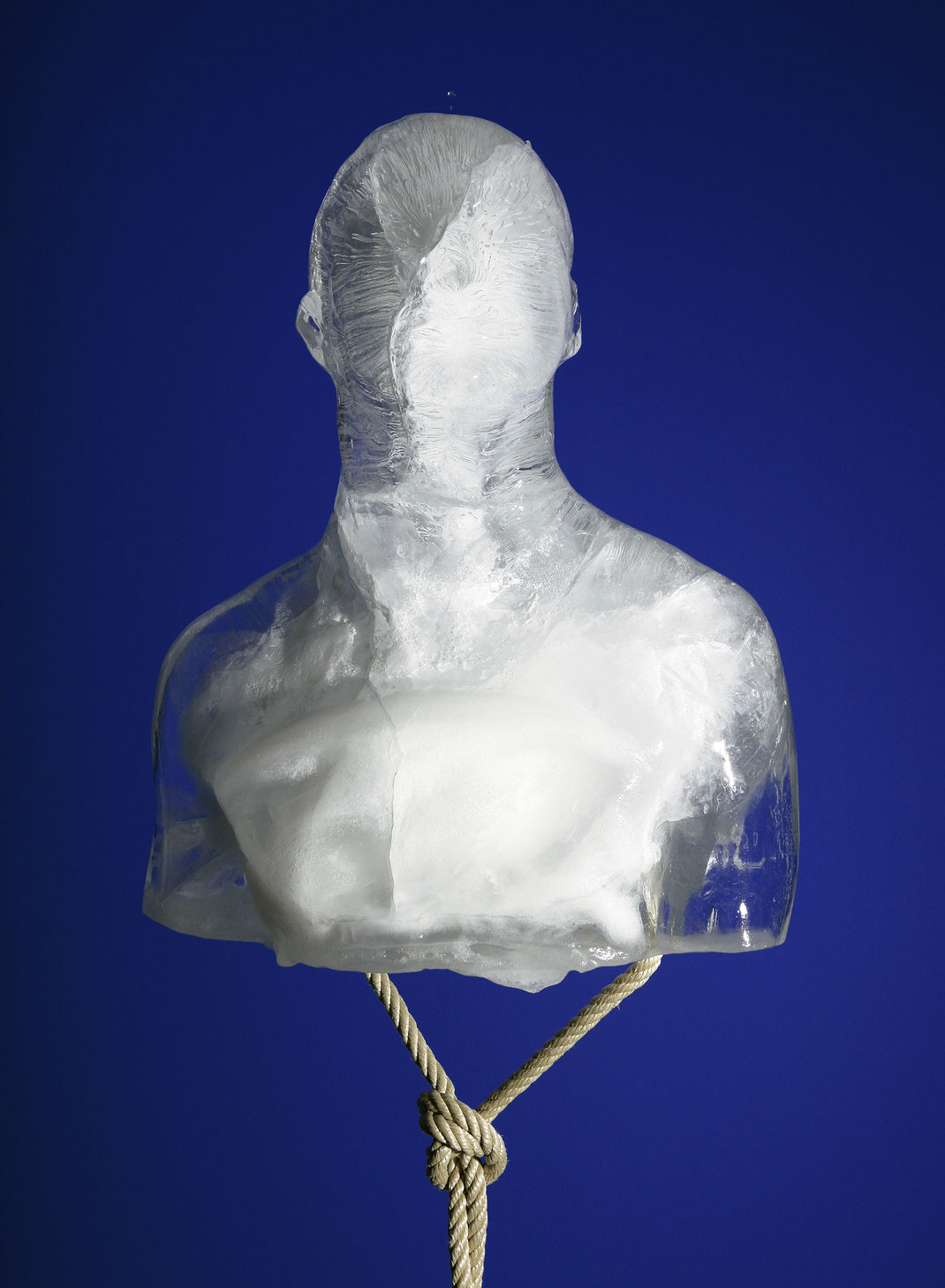
Frozen Self-Portraits
Frantiček Klossner calls his series of works with frozen portraits and bodies "Infinite Performance". The performative concept is not only designed for the duration of an exhibition, it already spans over 30 years, since his first "freezes" (1990) until today, each time in a new context in numerous installative or medial variations. Each new staging is a temporally limited process. Involuntarily, one thinks of transience and passing lifetimes. But the attraction of the work and its equally strong charisma are able in their totality to stimulate thoughts, feelings, and memories whose togetherness is already art-specific. So it's not just about a self-portrait made of ice that slowly melts away, but above all about a "human image of the present" that changes imperceptibly yet visibly, finally dissolving completely. The "becoming less and less" of the ice-solid sculpture is just as much a part of Franticek Klossner's understanding of the work and its concept as the ritual repetition and the ever-recurring "freezing of oneself". His work is in a constant state of flux between transience and reappearance. In doing so, the artist makes use of ambiguous symbolic settings and the conscious reactivation of millennia-old notions of time. He is concerned with a sculptural image of man that carries time within itself, as it were, and embodies various notions of time. In this way he also poses the existential question of the "inner time" and the "outer time" of man. (Dr. Peter Friese, Kunstverein Ruhr, Essen, 2015)
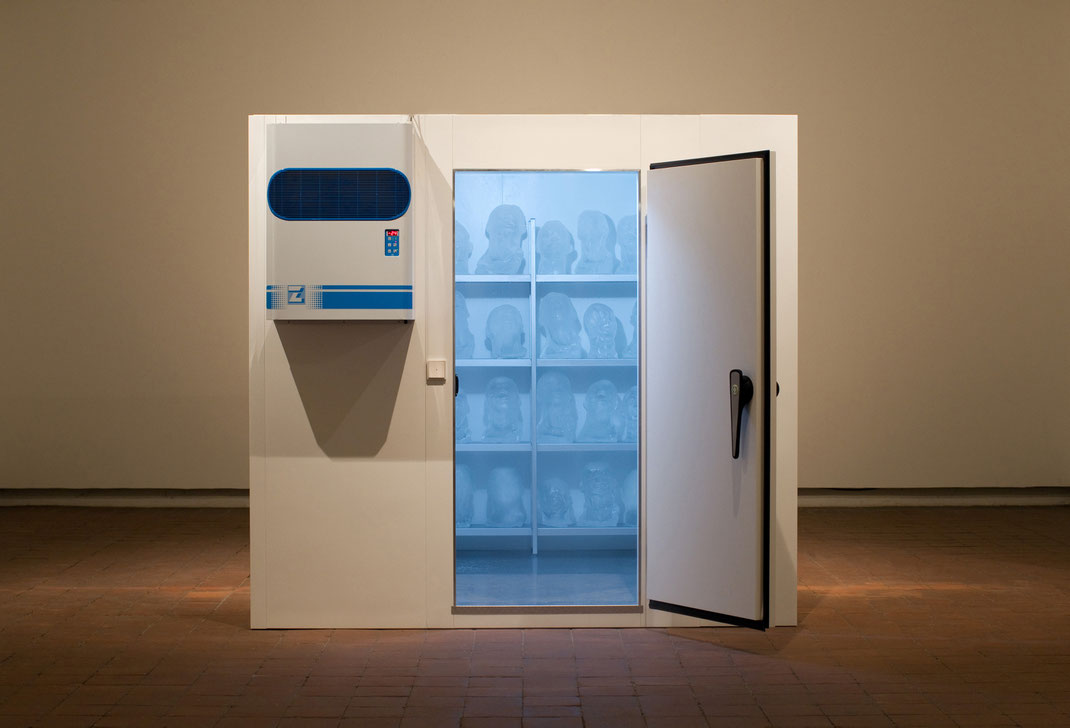
We breathe in the Artwork
In the pale light of an incandescent lamp, Franticek Klossner stores a multitude of frozen self-portraits. The whimsical collection seems like a clinical experiment. The lucid heads are lined up frontally on metal shelves. Each head is shaped differently by the freezing process: Burst open, torn, split, or a perfect likeness, they reflect the full range of deformation and shape-shifting. Confronted with these "frozen selves," we involuntarily think of Richard David Precht's bestseller "Who am I - and if so, how many?" The vulnerable physicality of the stored "I's", becomes a symbol of human conditions. In the cold of the walk-in freezer, the processes of our perception intensify: with every breath the cold penetrates us! We breathe in the work ... and leave when exhaling, by the warming of our breath, a constantly growing hoarfrost on the frozen heads. Like a fine fur, the breath of the audience lays on the work of the artist.
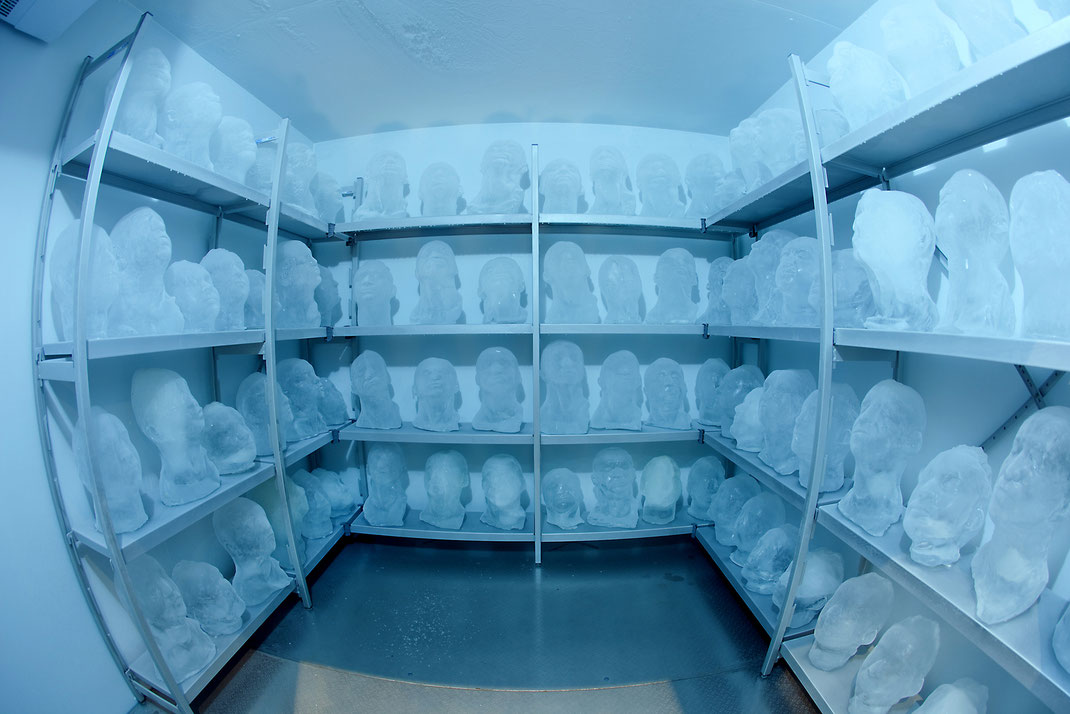
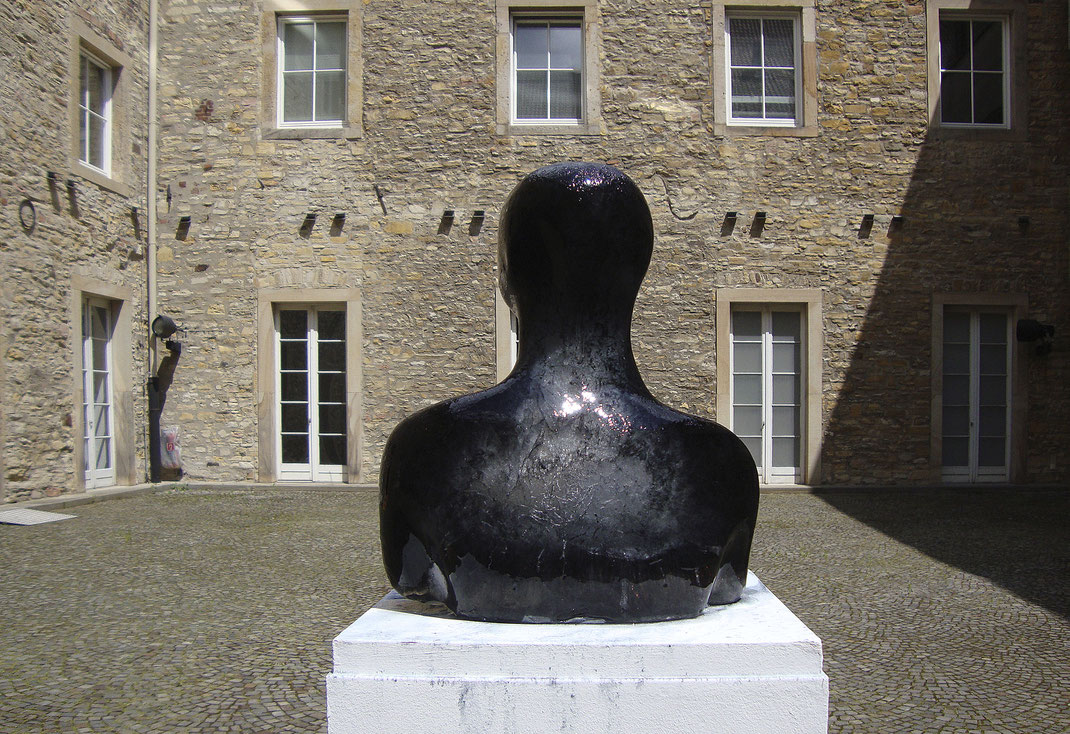
Inge Herold, in: «The Upper Half / The Bust since Auguste Rodin», Städtische Museen Heilbronn, 2005
Like Dieter Roth, Franticek Klossner subjects his self-portrait to deformation and dissolution, but in his work the aspect of the cycle of becoming and passing away also plays an important role. Moreover, his material has a completely different quality than Roth's. Klossner's self-portraits, titled "Melting Selves," which he has been creating since 1990, are casts of frozen water that he uses in various ways in installations, performances, and video sequences. Water is not only the life-giving matter par excellence, it is also an extremely changeable element that occurs in three states: liquid, solid (snow and ice), and gaseous (haze, mist, steam). The processes of freezing and melting are - like baking in Quinn's works - deforming progressions that develop a strong momentum of their own, over which the artist has no control. Klossner counters the deformation and dissolution through melting - to be understood in his earlier works as a metaphor for time and transience - with the idea of rebirth and renewal in a video work developed especially for the exhibition "The Upper Half." Six busts of the artist decay and emerge anew in a rhythmic process accompanied by a minimalist sequence of sounds based on his heartbeats. The busts melt - with the drops metaphorically rising to the sky like thought bubbles - and reform from drops rising from below: a reversal of the actual process. Klossner combines the idea of an eternal cycle of life with the theme of self-exploration and the question of identity: "There is no such thing as an individual, we are liquid identity. Any arrest is meaningless - time is change of form."
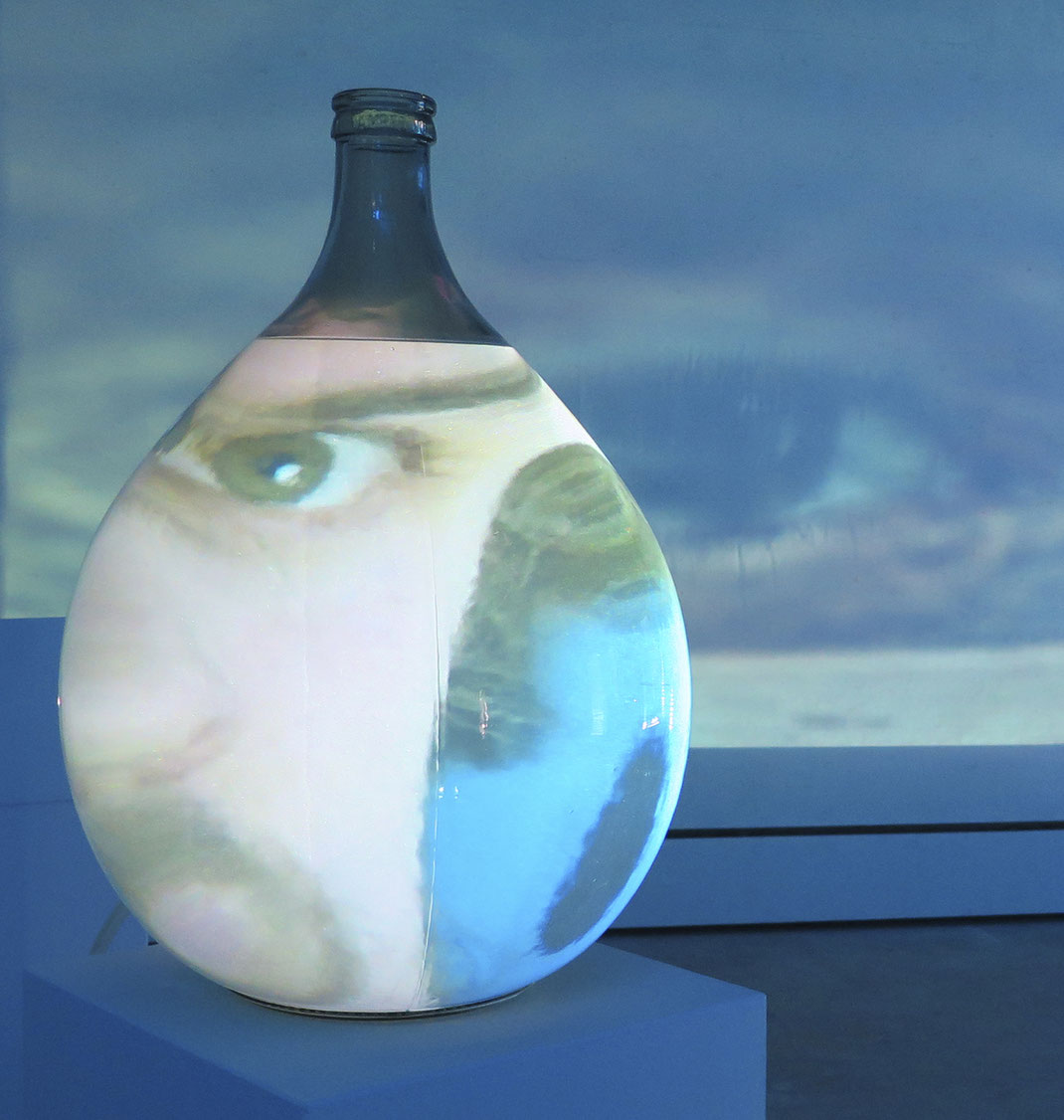
Human states of aggregation
Frantiček Klossner's works are imbued with existential questions and address the processes of mental individuation and social interdependencies. The video installation "ex vivo - in vitro" shows this particularly vividly: the scenery is reminiscent of a collection of anatomical wet specimens in a museum of medical history. In large glass flasks immersed in liquid, isolated, preserved and separated from each other, we discover naked human bodies and talking heads. Bodies writhe in the confines of their encapsulation. Heads circle around their own axis like globes. The passing faces become world maps of lives already lived. The situation makes clear what social isolation and exclusion do to a person's psyche. Yet inside the glass bulbs germinates human resilience. In enigmatic words, the "shut-ins" speak to themselves and to us. They speak of love and longing, of closeness and distance, of hope and confidence. With their hypnotic voices and repetitive lyrics that overlap and contradict each other, they draw the audience under their spell. In this way, the individuals separated from each other convey an extremely powerful and topical image of today's society and the idea of what it might mean to be human.

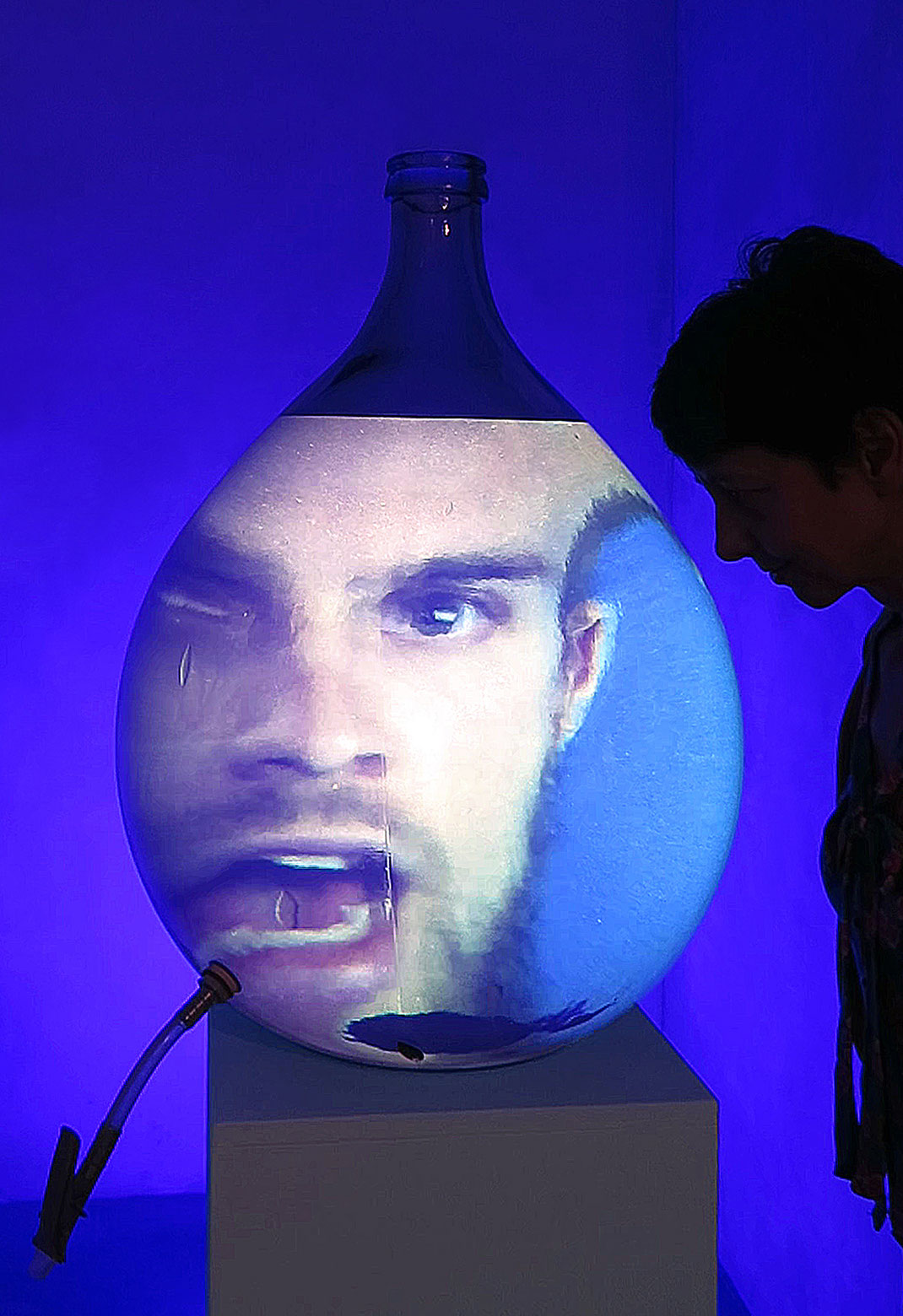
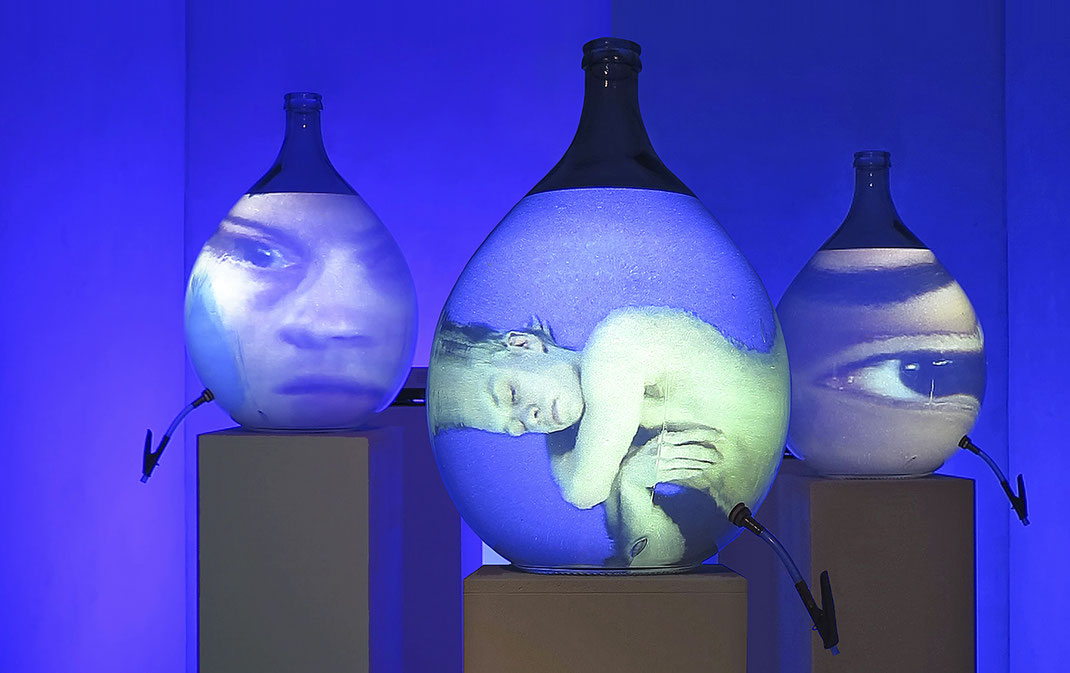

Exhibition view "Danse Macabre", Museum of Communication Bern, 2016, Works from the Ketterer-Ertle art collection: «X-ray of My Skull» by Meret Oppenheim (1964) and «My Skull encounters its own Face», Video in X-ray fluoroscopy by Frantiček Klossner (1999)
The skeleton of a human skull, moving vividly and looking at us from its bony eye sockets, has a frightening and irritating effect. In the flesh a skull, alive? The unconventional self-portrait in X-ray fluoroscopy is set in the classical-looking form of a medallion, referring to the pictorial characteristics of mourning jewelry from the postwar years. But Frantiček Klossner's video performance is a memento mori full of self-irony and palpable pleasure in artistic experimentation with medical imaging media. The oppressive associations are clearly contrasted by sly mischievousness and black humor. Death seems to want to tell us that life after death will be as sensual and whimsical as our contradictory existence in that time we call the present. (Léonard Cuénoud, 2000)
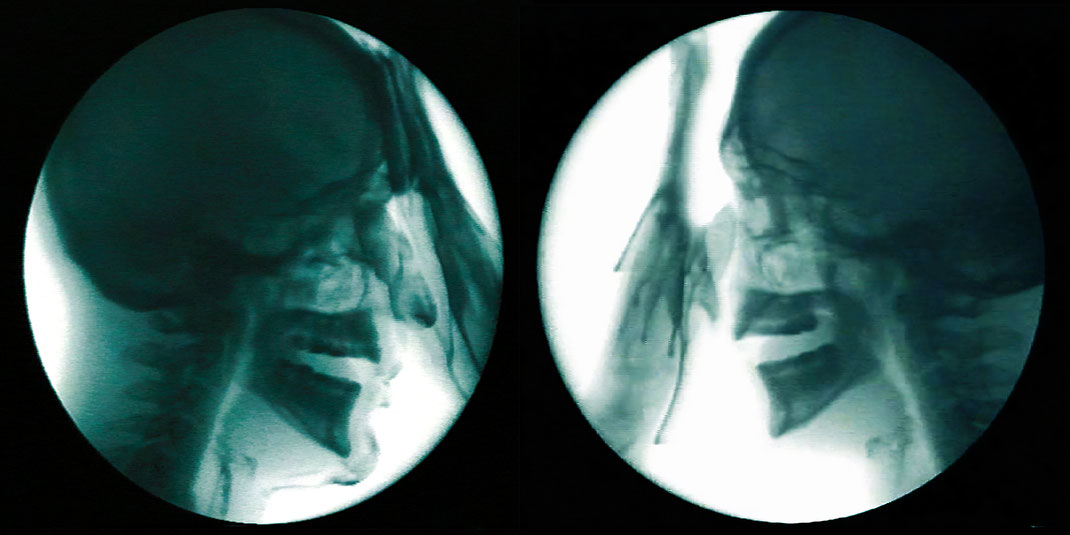
«My skull discovers its own face», Real-time video in X-ray fluoroscopy, Self-Portrait, Facial painting with medical contrast medium, Frantiček Klossner, 1999, X-ray imaging in collaboration with the Institute of Radiology, University of Bern
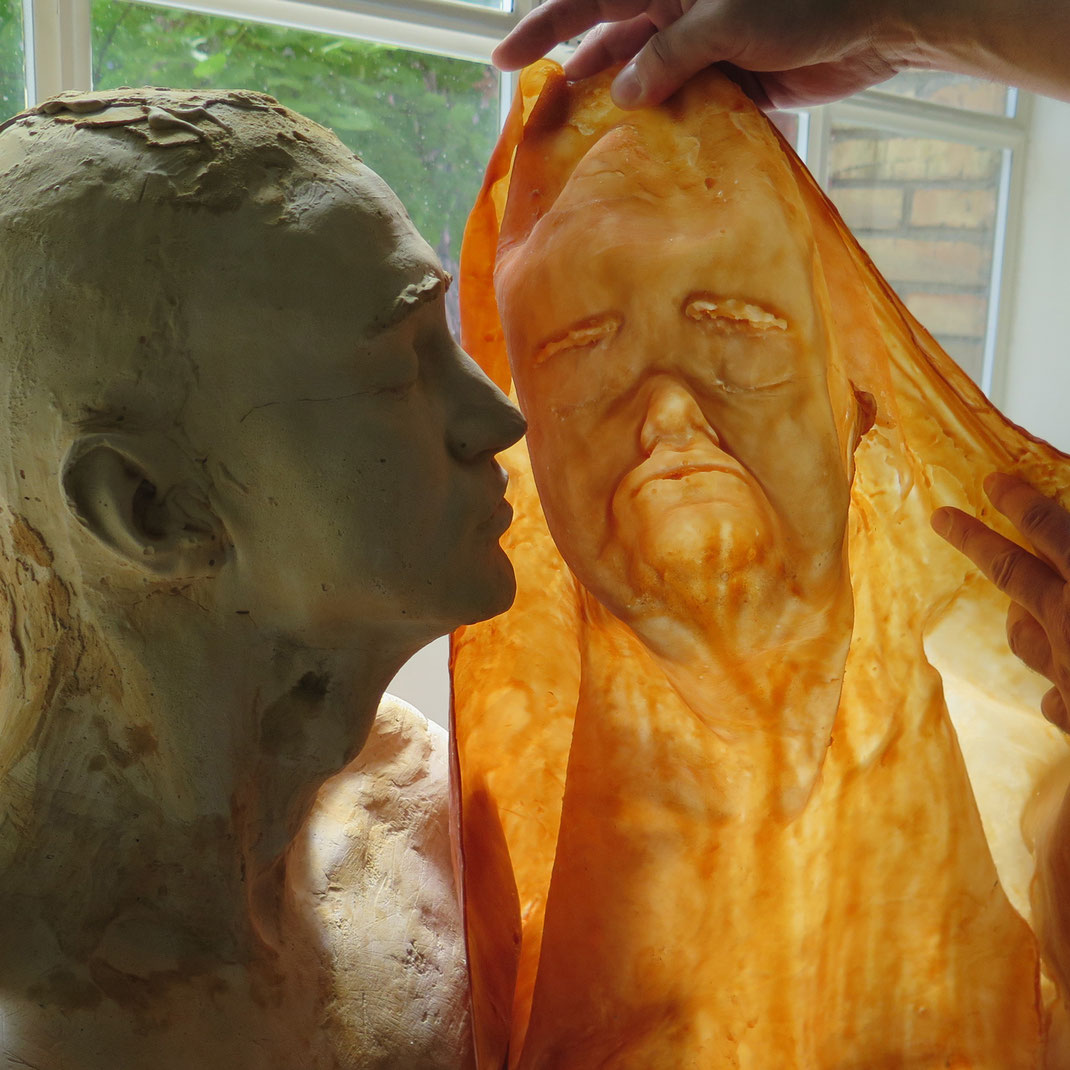
« ... The skin I no longer inhabit»
Dr. Caroline Schuster Cordone, Vice Director, Museum of Art and History Fribourg MAHF
The transformation and fragmentation of the body are central to the work of Frantiček Klossner. Since 1989, he has been making life-size "Flayings" out of natural rubber. These are realistic casts of his body that he uses to freeze his portrait busts made of ice, the "Melting Selves." The production of these works is the result of slow and careful work that resembles a ritual: the artist applies the material in thin layers, layer by layer, and allows it to dry between two applications. Many passes are necessary until the required density is achieved, imitating a real skin. Over the years, this has resulted in a series of peeled skins - like pupae from past lives - or relics from the past. The natural aging of these works (due to the darkening and drying of the material), as well as the traces of the working steps (scratches, cuts, injuries) give each one a unique appearance.
These fragments, which the artist molds and preserves from his own body, can be read as ritualized stations in a process of human and artistic individuation. Klossner's "Flayings" are also part of the artist's dialogue with ancient tradition, the Bible, and cultural history. One thinks of the myth of Marsyas, the music-making satyr who was flayed by Apollo, or of Bartholomew, the flayed apostle whose skin became an attribute. A final inspiring connection arises especially in a group presentation of works in an exhibition. The hanging of several skins then takes the form of a phantasmagoric vision. The skins seem to float, eyelids closed, facing an imaginary world. One inevitably thinks of Francisco de Goya's famous etching El sueño de la razon produce monstruos (The Sleep of Reason Produces Monsters) from his series Los Caprichos. In it, the sleeping painter creates flying and menacing night creatures. According to Goya, "without reason, imagination produces impossible monsters: united with it, however, it is the mother of the arts and the source of miracles." The connection to Klossner is twofold: formally in the vision of a mysterious and unsettling flight of fancy that originates from the artist, but also in the relationship between reason and imagination. For Frantiček Klossner's practice combines enlightened philosophical thought with an artistic freedom that corresponds to his imagination to express simultaneously the emergence of the self, its metamorphosis and its extinction.
Finally, shedding his own skin enables Klossner to embody the passage of time, to visualize the stages of his personal development as a human being and as an artist, to embody his metamorphoses
and his life's journey like a snake repeatedly shedding its own skin to give birth to itself anew.

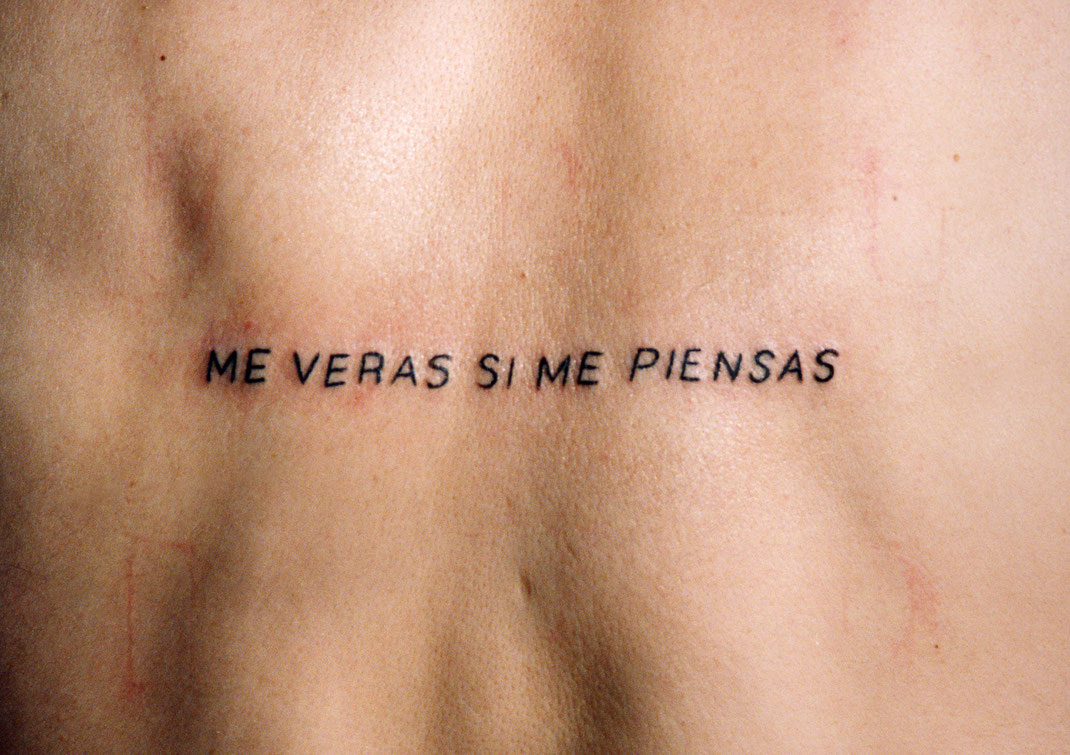
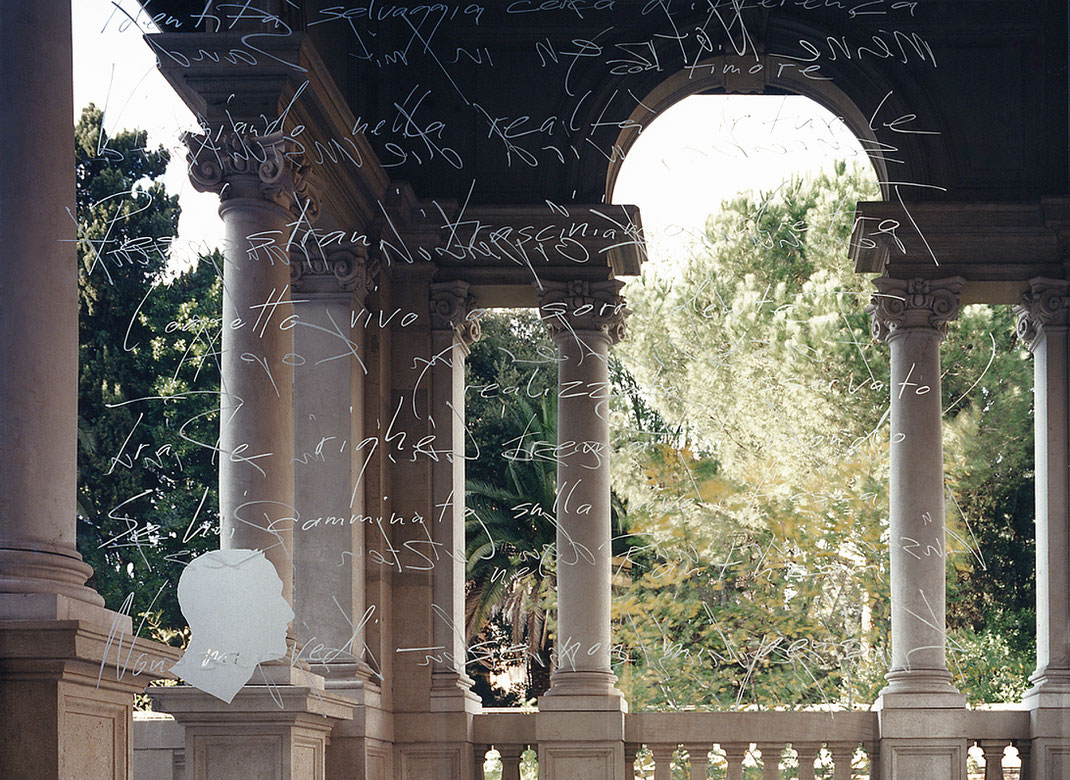

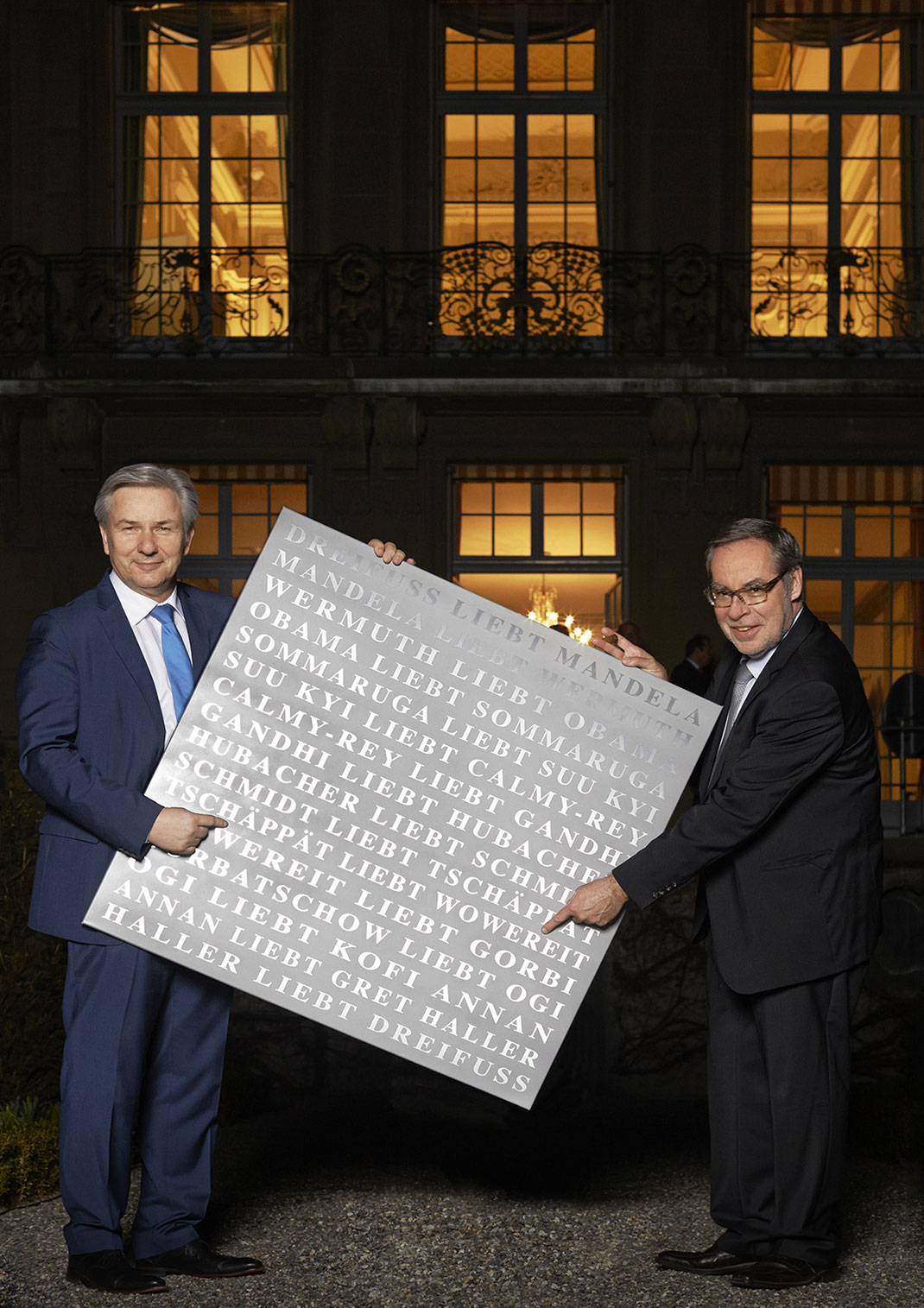

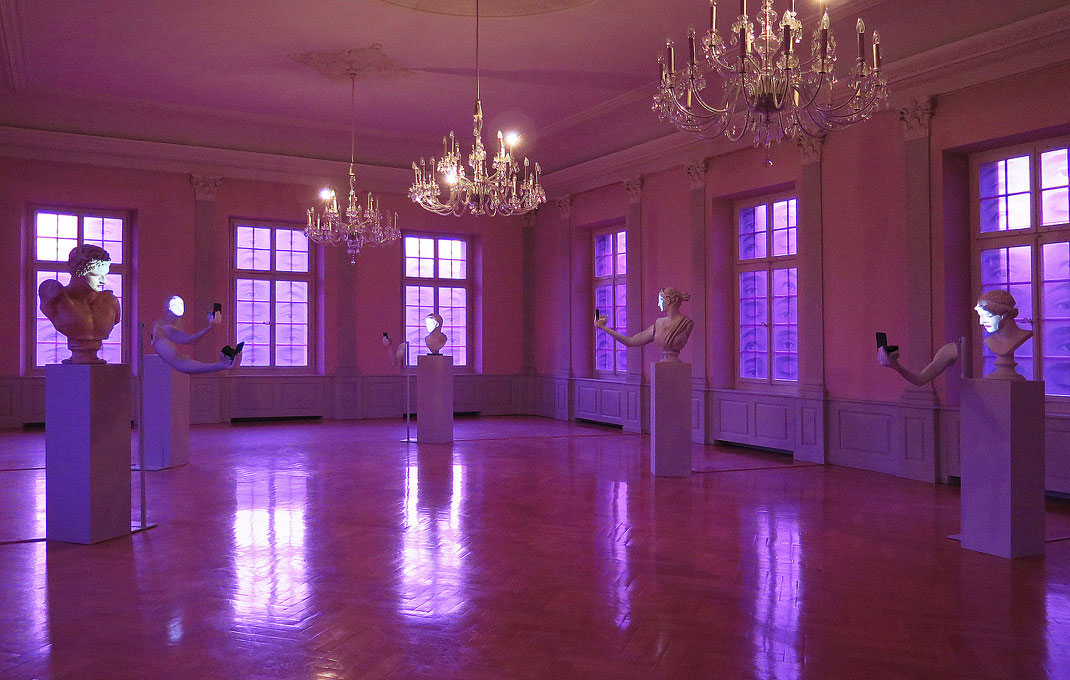
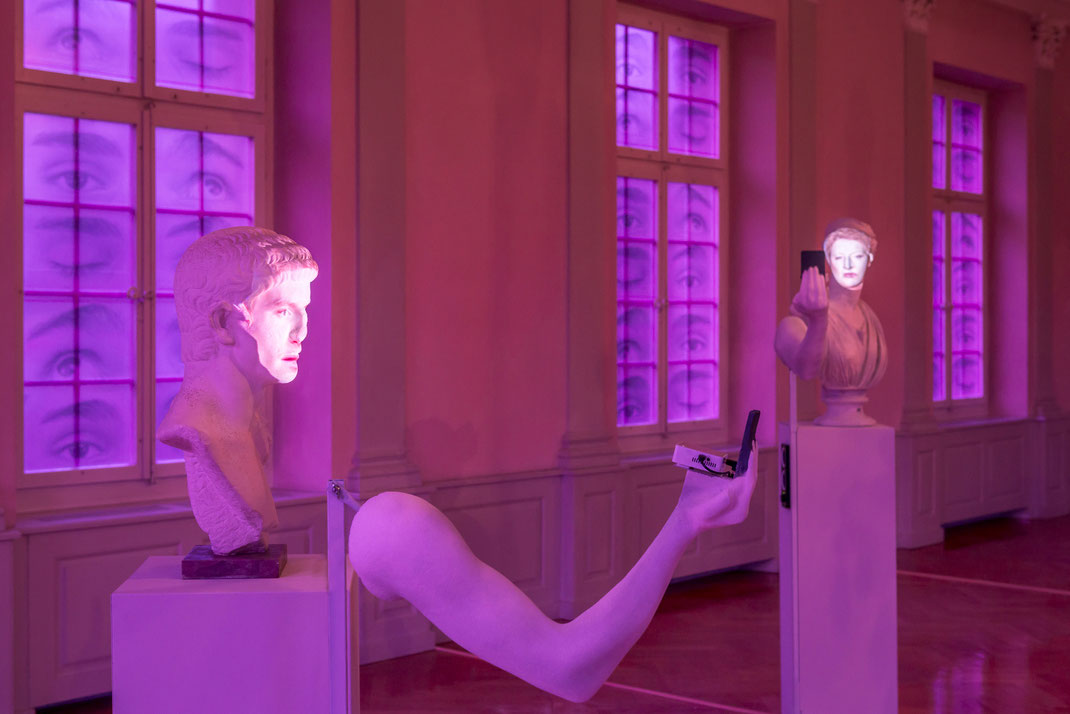
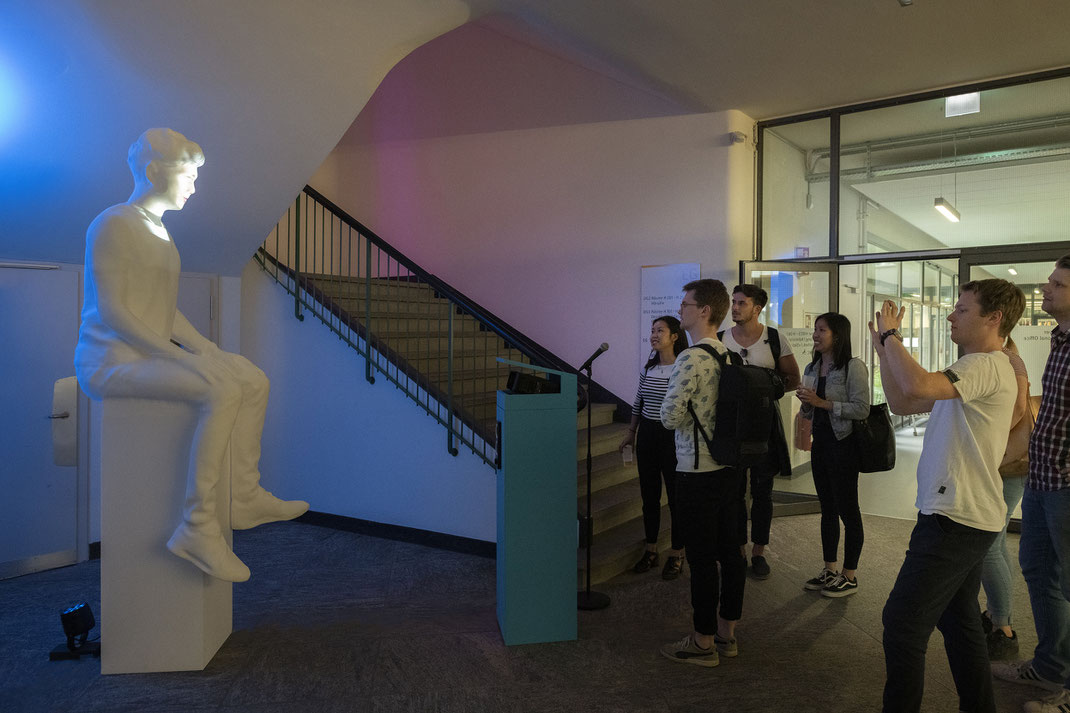
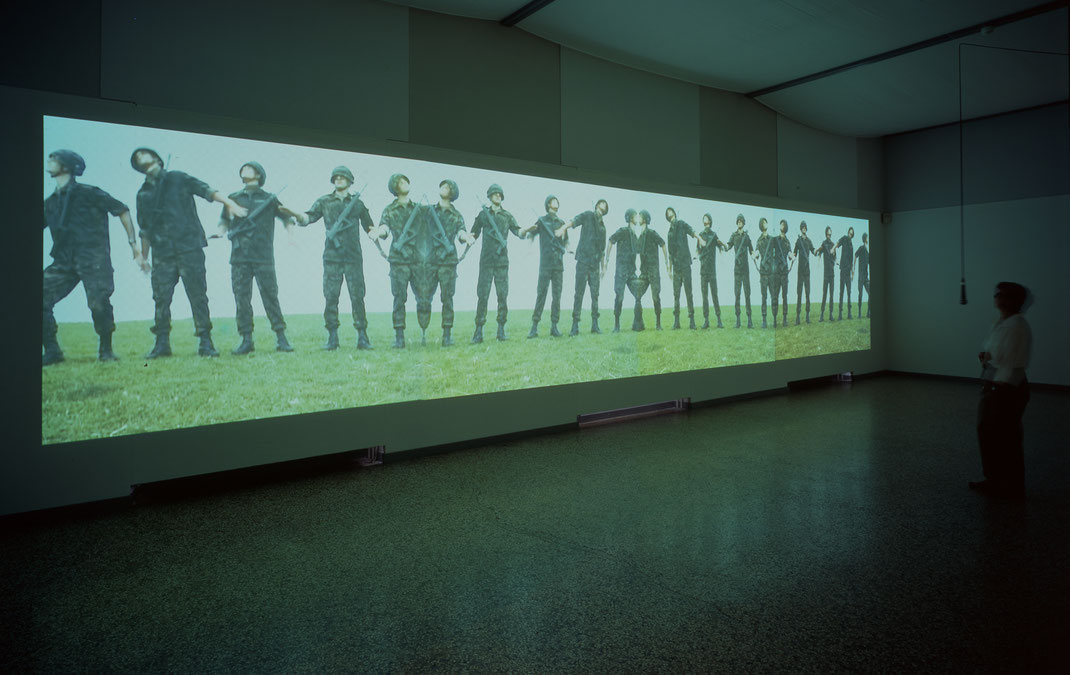
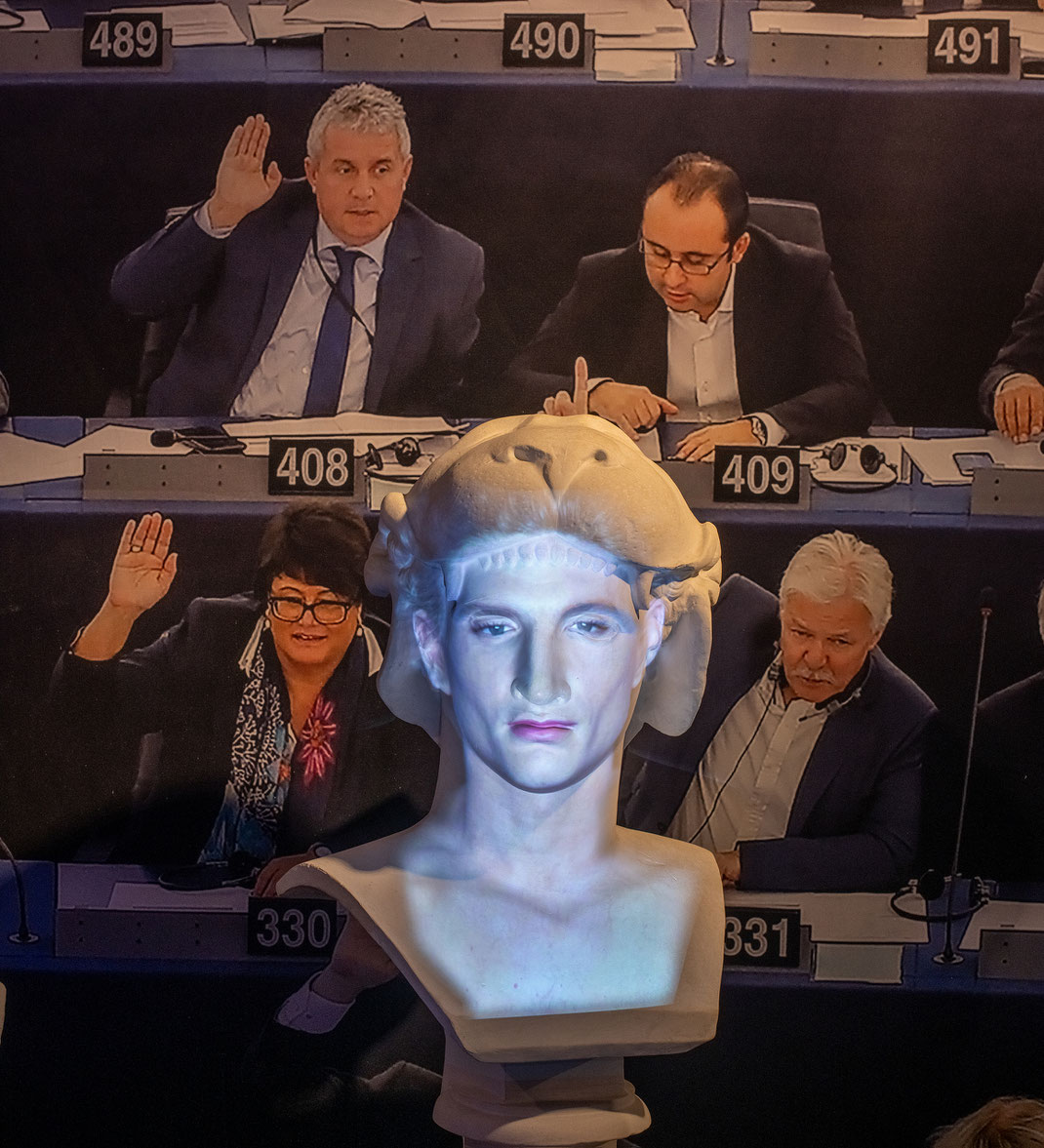
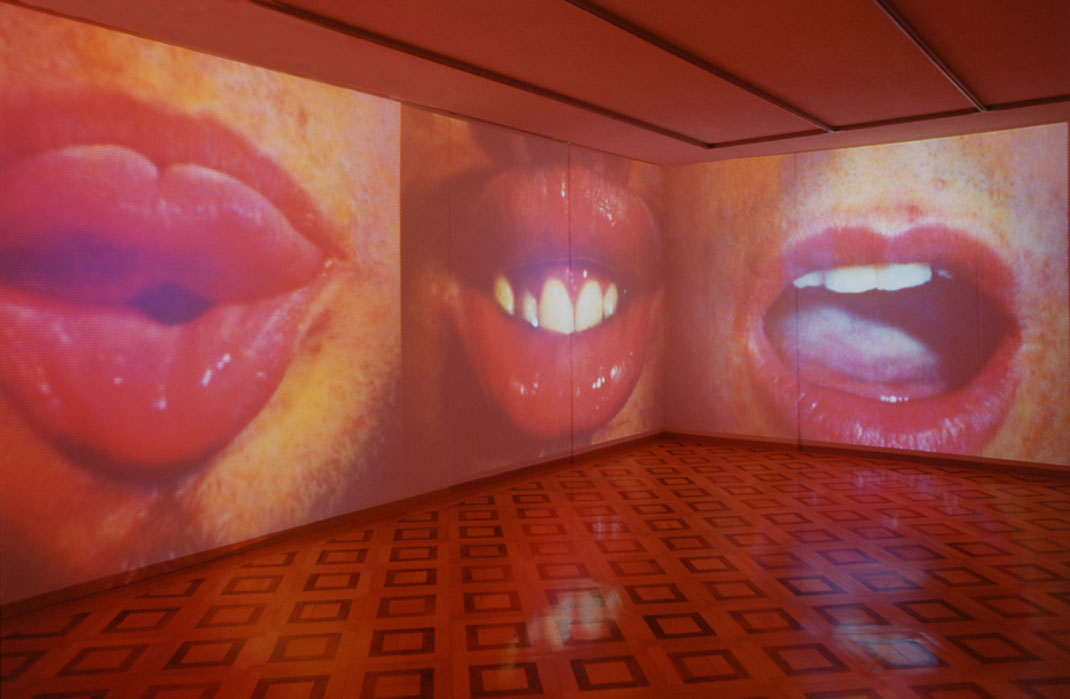
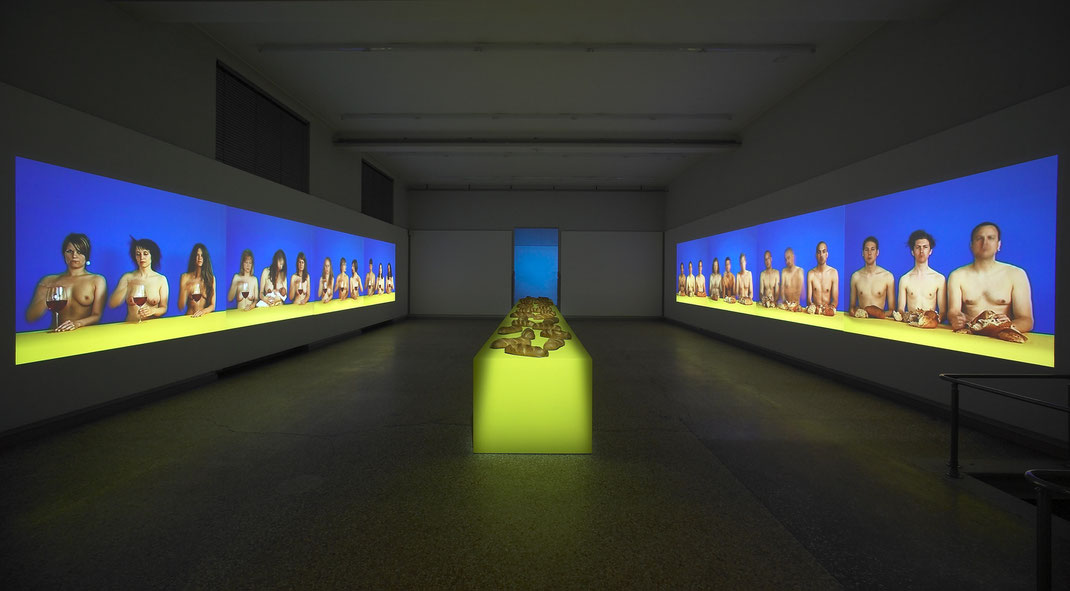
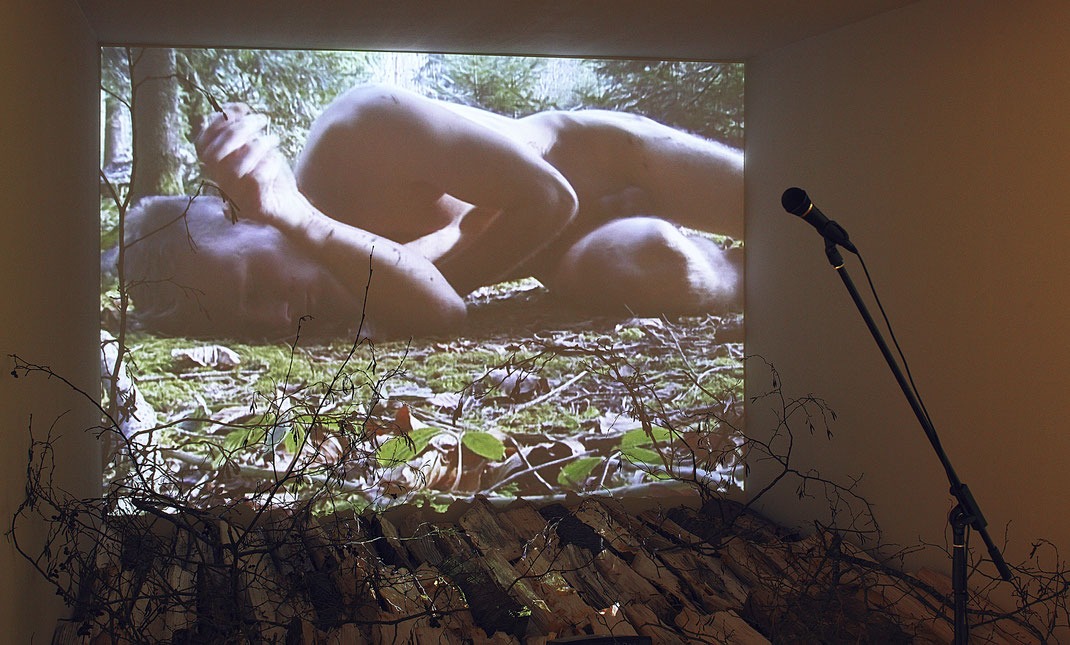
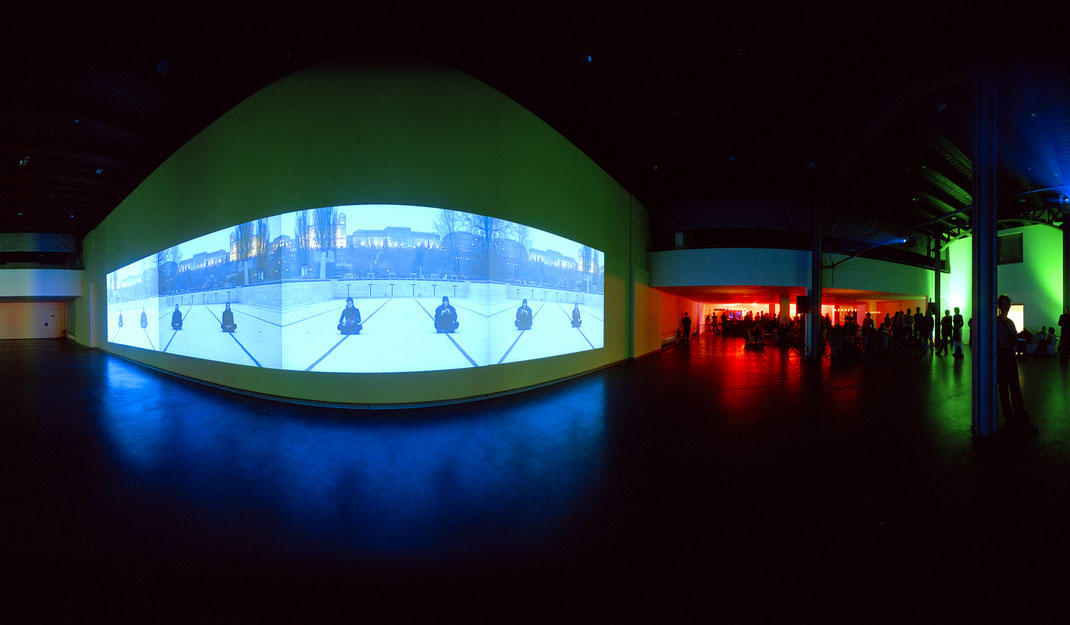
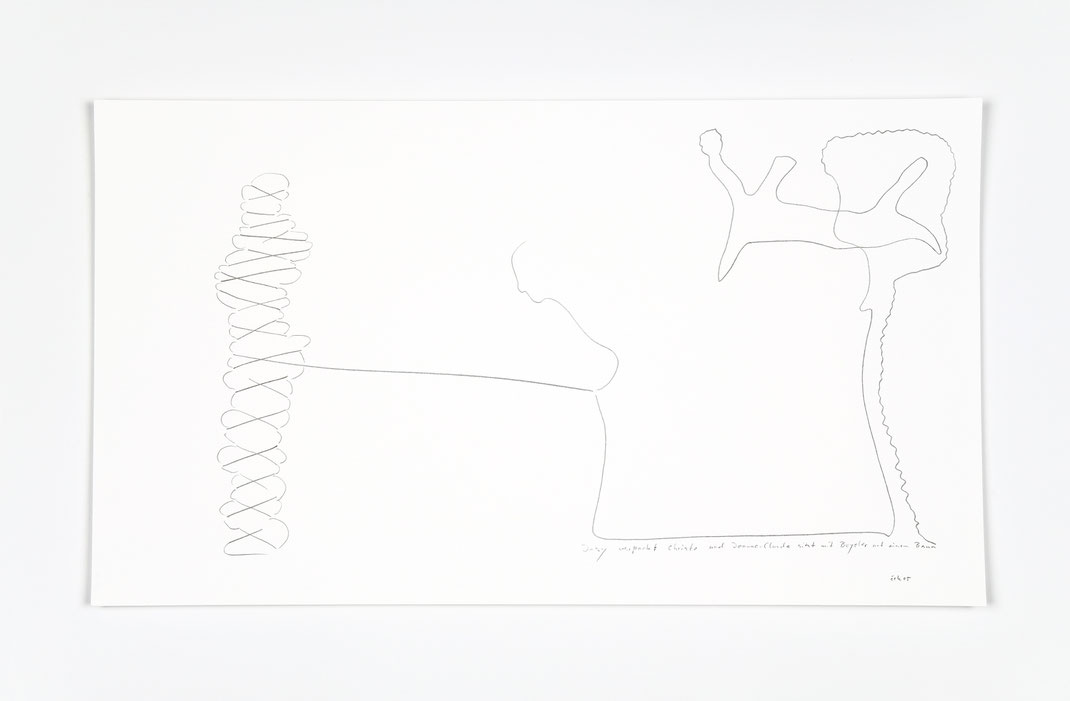
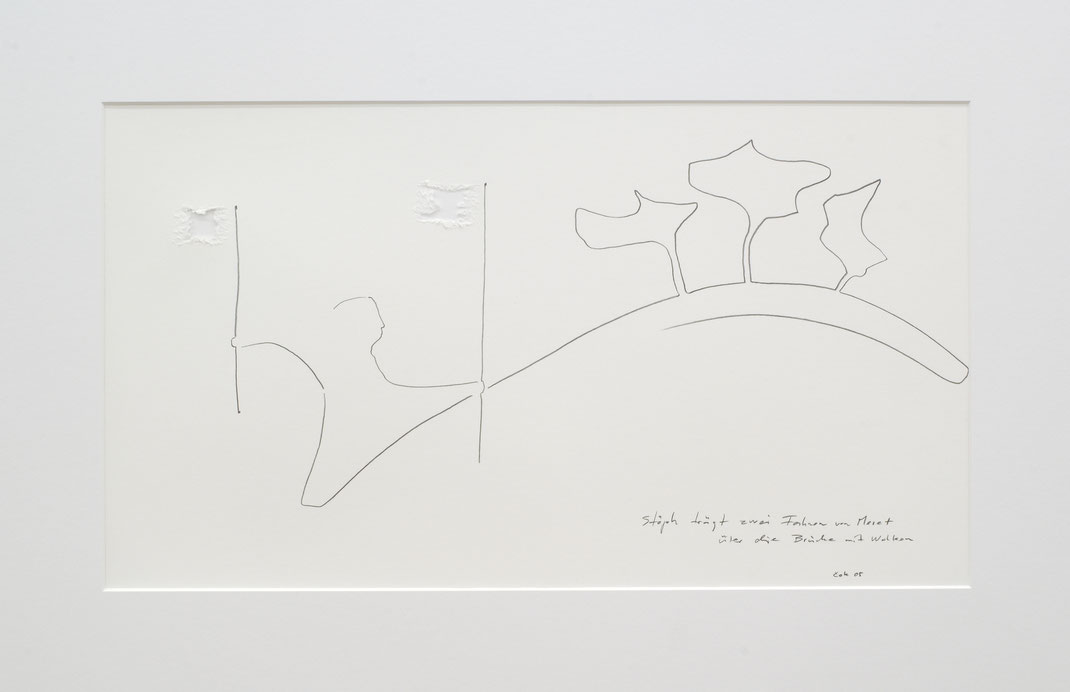
The art whisperer
Michaela Nolte, on the series of works "Kunst macht Politik", 2007: In his interactive performance archive "Kunst macht Politik" (from 2003), Frantiček Klossner weaves a dialog loop of diverse networks with video recordings of around 500 cultural workers to date. It is not a conventional collection, but a rhizomatic meshwork, with the artist as community benefactor for human, artistic and media interference. Cultural workers, cultural mediators and cultural politicians are animated by Frantiček Klossner to spontaneous actions, performances or intimate improvisations, from which - in the sense of Gaston Bachelard's "The flower is always already in the almond" -, poetic and surreal miniatures emerge. The Paradise performance by Sandra Gianfreda and Bernhard Mendes Bürgi at the Lemon Tree of Knowledge in the Kunstmuseum Basel, for example, or the artist collective that Klossner lures in front of his camera with the simple instruction from the peacock-like flat-sharing table: "Just go up the walls!" The artist as animator makes you think the impossible and puts it into action. The artist as archivist creates unconventional documents based on the desire for art, including numerous now historic moments such as the performance of Martha and Maurice E. Müller with shovel and pick in the excavation pit of the nascent Zentrum Paul Klee or the "Abbey Road" performance with Balthasar Burkhard, Claude Kuhn, Gerhard Johann Lischka and Alexander Tschäppät on a crosswalk in the Bernese embassy district. "Fundamental to the manifold manifestations of performance art [...] is the physical execution of an action," a performance reader states. Apart from the fact that this sounds like force majeure, Frantiček Klossner refutes such a definition with his intermedial works, in which video, performance, photography or installation always point beyond the one medium. Not the physical execution, but rather the physical pleasure and interaction of performers and viewers appear as a central moment in the artist's work; humor as another. Humor as catharsis. From the visual arts Klossner acts cheekily, cunningly and innovatively. Examining the body as sculpture, as a dissolving and self-generating work of art, he quite naturally allows dance, language, drawing and writing to flow into the crossing of boundaries as a basic performative attitude. Thus it seems only consistent that the physical execution is completely suspended in what Klossner calls "the most ultimate performance". Tim Steiner, an artist friend of Frantiček Klossner, who wears a work by Wim Delvoye on his back as a living image carrier, had to have the famous tattoo cut open for a medical procedure. Frantiček Klossner accompanied his friend during the anesthesia in the operating room and documented the surgery together with photographer Simon Schmid. "The loss of consciousness made a deep impression on me and led to the question of whether consciousness is needed at all for the performance. Tim Steiner's body, suspended in anesthesia, was incredibly present and, in its absolute passivity, provided a fascinating counterpoint to the active will to create art." The performance of the anesthetized friend becomes an immersive experience of art, of being art, completely imbued with authentic self-evidence, where images do not erode but continue to work and inspire the (seemingly) impossible. The artist becomes an art whisperer. On the borderline of explicitness and implicitness, Klossner's art releases energy and holds potential for contagion.

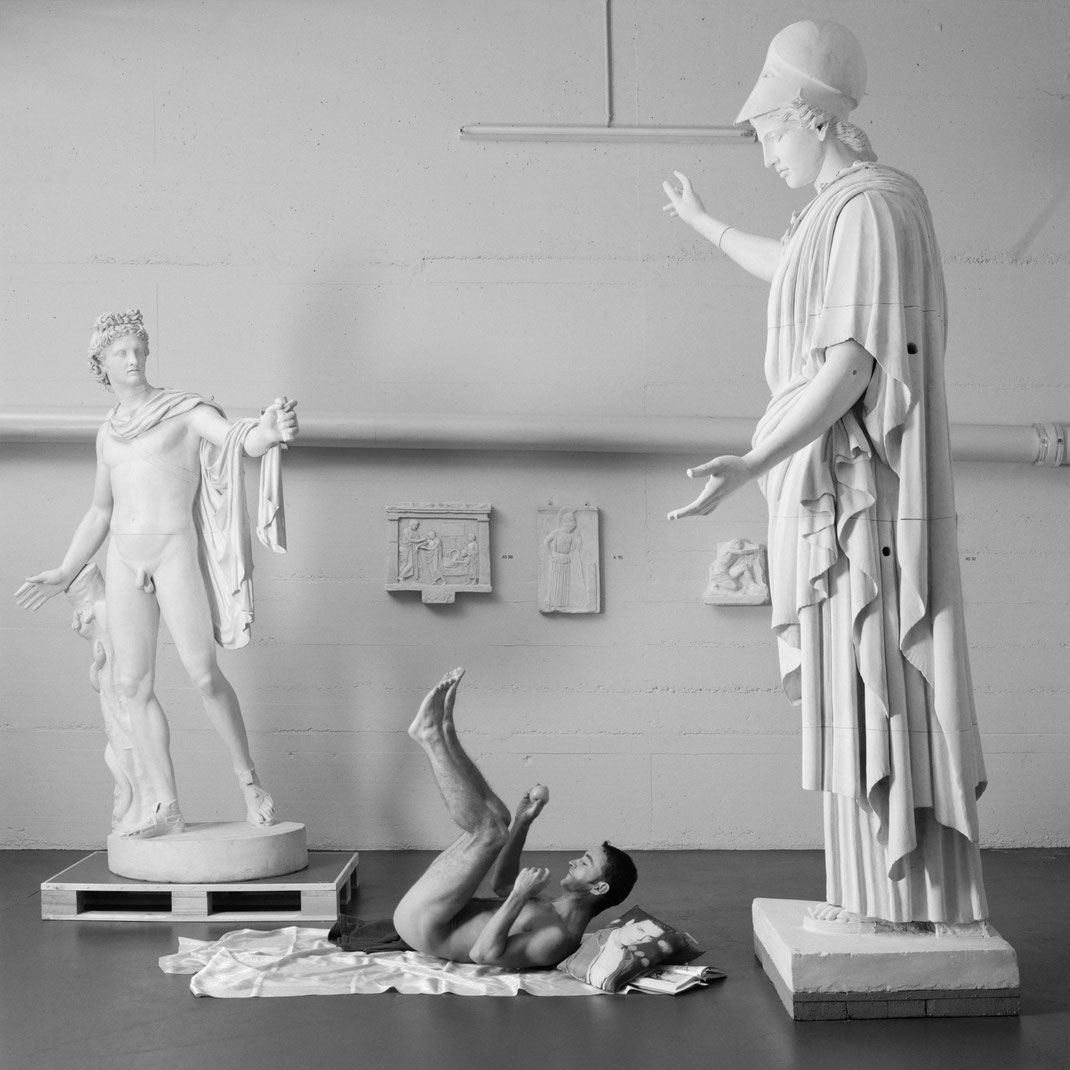
A purely physical relationship
Franticek Klossner's photographic series "His- & Herstory" was created between 1994 and 1999 from a series of performances. With the title the artist refers to the female and male perception of cultural history. Is our cultural history and history of mentality a history of men (HIS-story) ? And if so, of which men? Where is the cultural history of women (HER-story) ? In order to face these questions in a personal way, the artist enters into physical relationships with cultural objects that he feels are particularly representative of the history of European mentality. He finds such symbolic witnesses in Bern, for example, in the Greek and Roman sculptures of the Collection of Classical Antiquities, or in public squares and secret cruising grounds in the city of Rome, where he was on a two-year residency at the Swiss Institute. The photographs show him naked in a two-way conversation with selected busts and sculptures that he encountered, for example, during his nocturnal rambles through Rome. Together with photographer friend Gian Paolo Minelli, he visits the "nocturnal acquaintances" the day after and has the "physical approach" captured photographically. Pointedly and exaggeratedly he says about it: "Cultural history is a purely physical relationship". At the same time as this series of photographs, which lasted several years, he also created his much-acclaimed video installations with "speaking busts". Using a mapping process, he projected video recordings onto the busts of Hermes of Olympia and Apollo of Belvedere. In this way he gave the Greek deities a concise voice of the present. In a street survey, he had asked passers-by about their "first encounter with contemporary art". These narratives resulted in an extremely poetic discourse on contemporary art between Hermes of Olympia and Apollo of the Belvedere. On another level, however, these video installations were also a cunning response by the video pioneer to the polemics of the time, which devalued media art in comparison to painting and sculpture on the grounds that video tapes were not originals, but only copies. Franticek Klossner opposes this conservative attitude in a pleasurably physical way and proves with his actions that even the noble sculptures of the Collection of Classical Antiquities are merely plaster copies and that ultimately only his own naked body is an original. Thus, on the one hand, the performance and media artist rebels against the conventional concept of art of the 1980s and 1990s, on the other hand, he provokes the bourgeois perception of art by mindlessly including the famous works of Greek antiquity (such as the Apollo from the Belvedere, the Discus Thrower by Myron, or the Barberian Faun) as performance partners and playing with props such as an inflatable rubber doll or the plaster cast of Pipilotti Rist's right breast. In a self-evident way, the artist signals his closeness to gender issues, to the women's and gay movement, and to cultural diversity. In a combative but also slightly shy manner, he wants to seduce and encourage his art audience to question their own thinking on gender norms and gender identity. His food for thought is not intrusive or provocative, but cunning and seductive. They leave the audience enough time to question inner images. This is precisely why his photographic series of works is of particular interest for the exhibition curated by Kathleen Bühler on "Questioning Masculinity" at the Kunstmuseum Bern. Cultural diversity, social change, and the examination of old and new notions of masculinity are inextricably linked to Franticek's work. So it is not surprising that in the Museum of Antiquities he disrobes and teasingly and with much self-irony opposes the concept of "kalokagathia," the Greek ideal of physical and mental excellence: "kalòs kaì agathós"
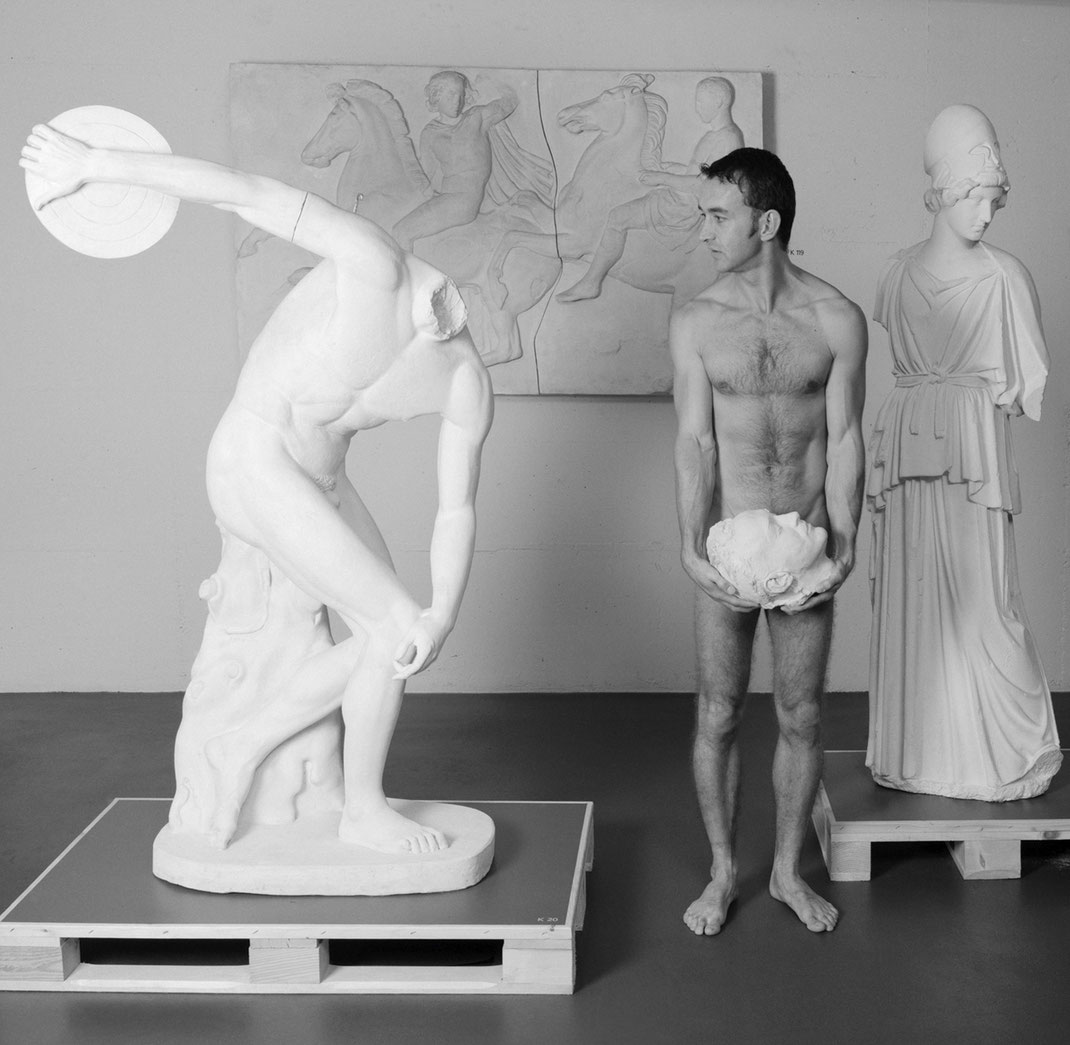

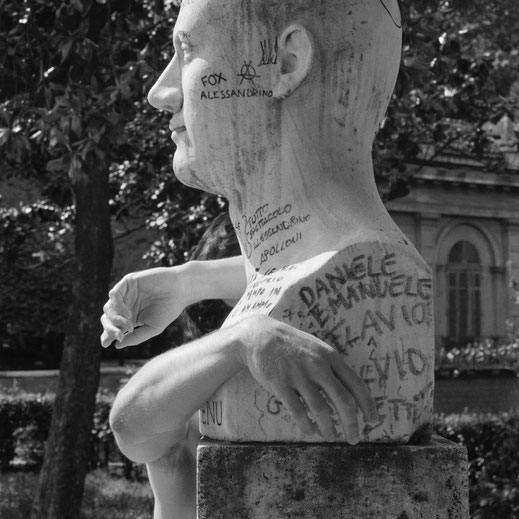

Drawings on skin - to tickle our mind
With ballpoint pen and felt-tip pen Frantiček Klossner draws the milestones of art history on the bellies of his friends. The body becomes the image carrier.... a mediator between recent art history and contemporary art. The belly button - umbilicus - acts in the drawings as a starting point and perky protagonist: with an open astonished mouth in the "Angelus Novus" after Paul Klee, as an acorn on the erect penis in the "Standing Man" after Pablo Picasso or hidden behind dense body hair in the "Déjeuner en fourrure" after Meret Oppenheim. The drawings scribbled on bodies not only tickle their wearers, they also tickle our minds: smiling, we rediscover art history. With mischievousness, Frantiček cracks the essence of the works cited and thus creates an extremely physical image for the personal appropriation of cultural history: art is incorporated with relish.
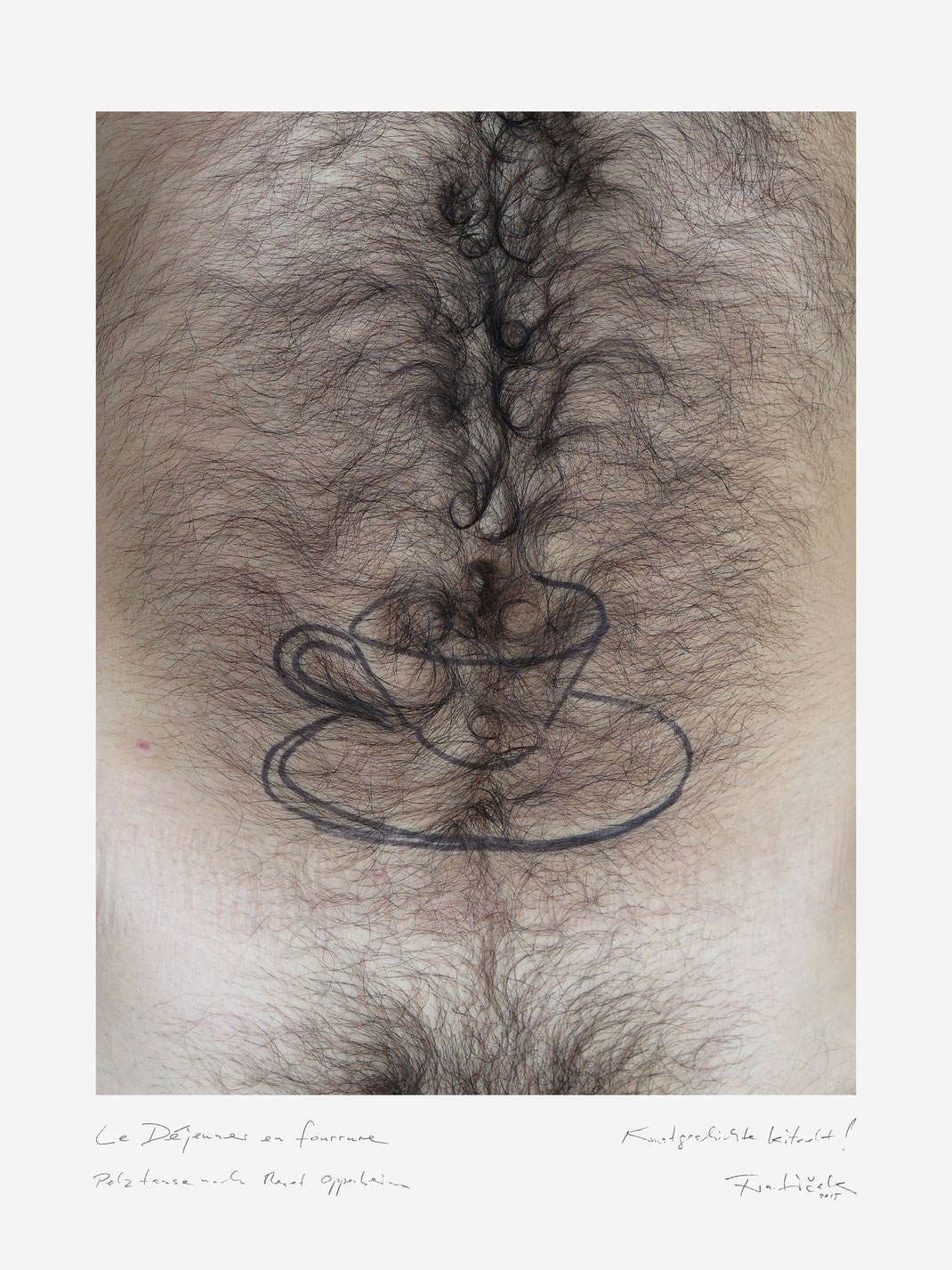
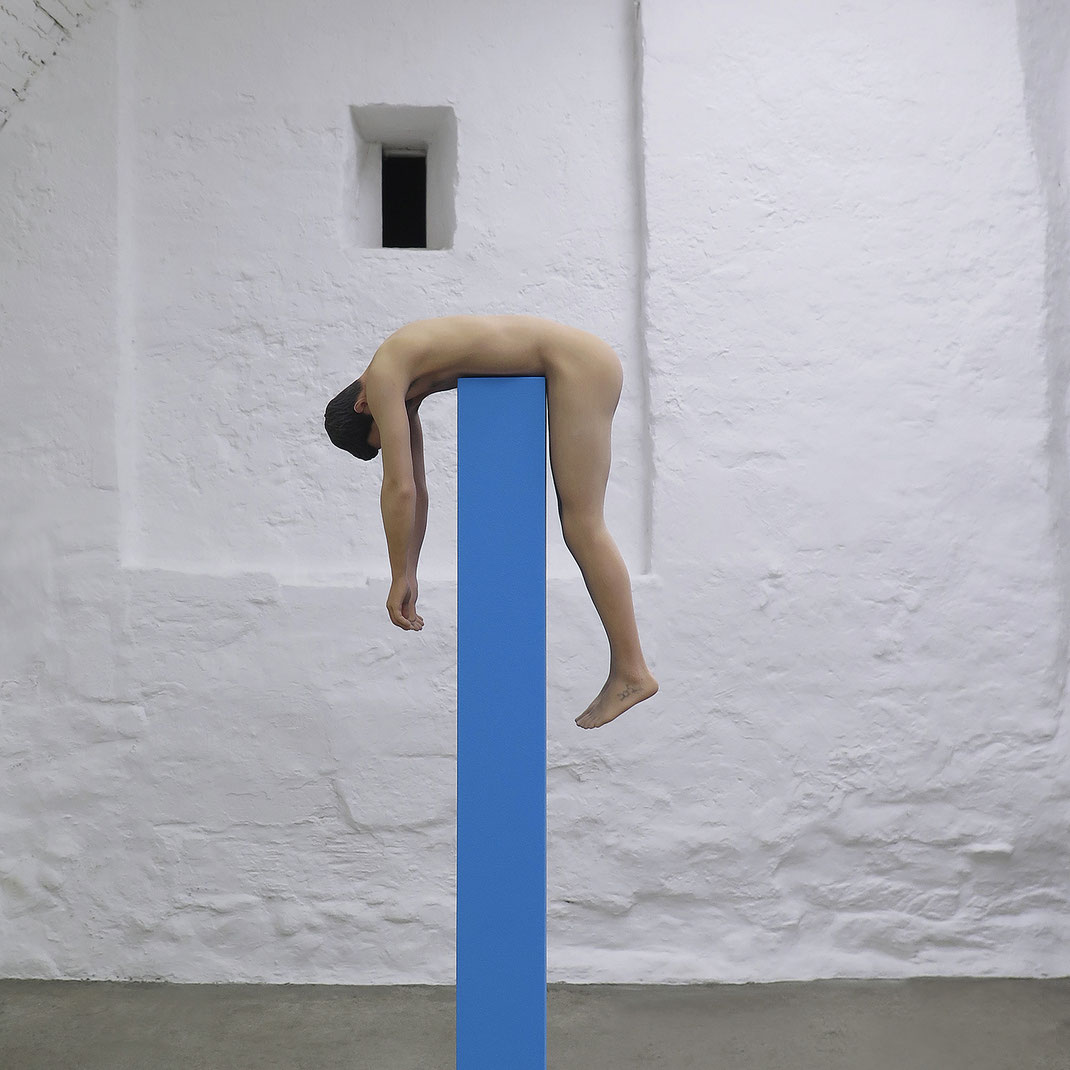
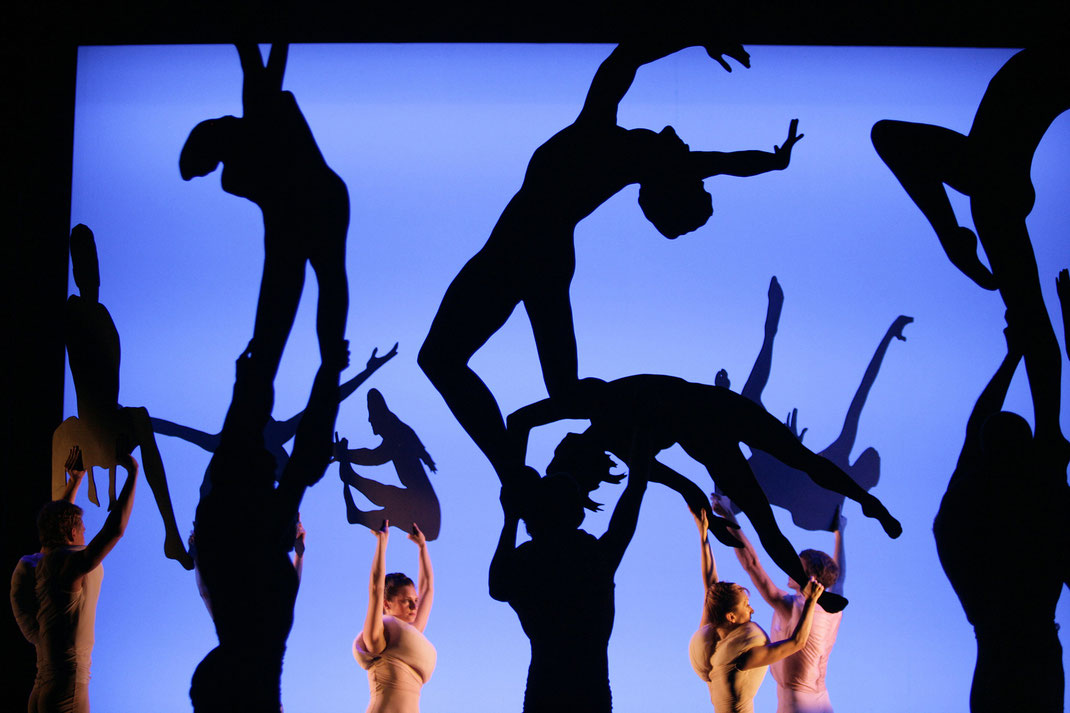
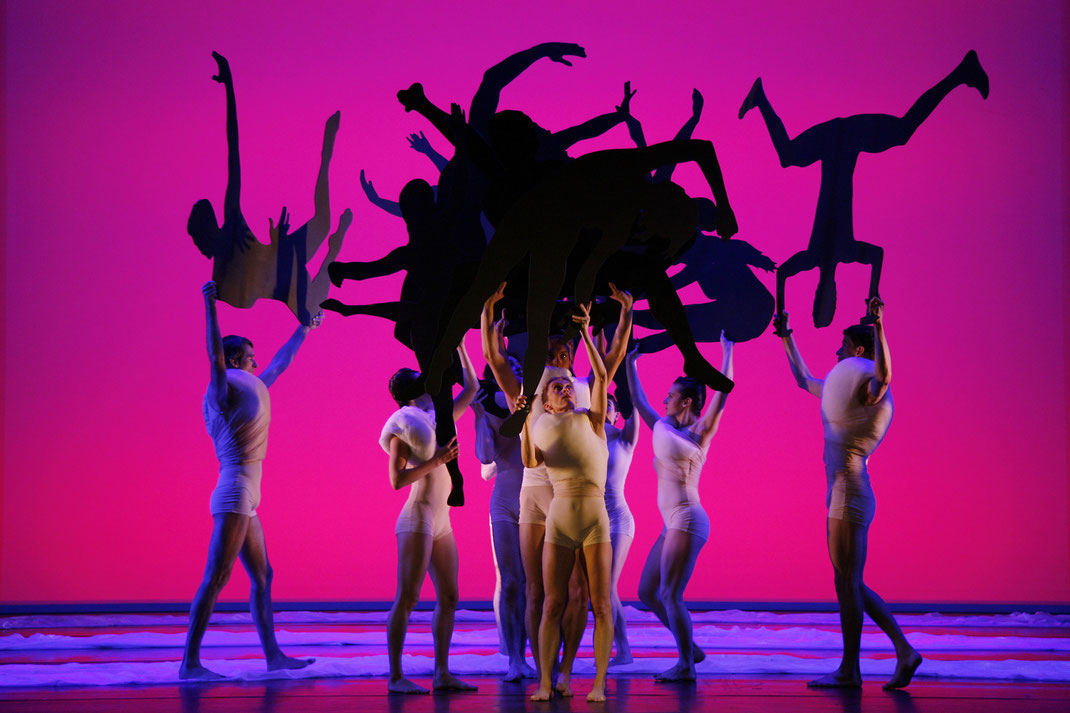

Kairos and Chronos
Above a large expanse of water hangs a self-portrait of the artist made of ice. At the beginning of its hanging, it is the exact 1:1 cast of the artist's head. Fresh from the cold room, hung upside down on a metal loop, this impressive ice body first covers itself with a velvety white layer of hoarfrost before gradually beginning to melt due to the room temperature. Finally, the fine white ice crystals dissolve and the falling water drops become the heart rhythm of the video installation. Projected onto the water, video footage of an attentive looking eye and the image of a naked young man in an embryonic pose appear alternately. A video projector has been placed in such a way that these images are precisely mirrored and magnified from the surface of the water onto the opposite wall of the room. The constantly falling irregular water drops of the melting artist's head, however, naturally create concentric pulsating circles on the water - like individual raindrops on a lake. And because the video projection is a "light image," the waves create multiple refractions and visual amplitudes within the mirror image as well as in the image projection. In this way, an impressive, constantly changing situation is created - both on the surface of the water and in the actual video, in which the viewer is drawn in as if of his own accord. It looks as if the viewer's gaze is answered by the hypnotic counter-gaze of the large eye, which is then followed by the huddled body of the naked young man. And all this is permeated by the dynamic concentric circles and oscillations emanating from the water drops, to finally condense into an impressive overall image that challenges the viewer's attention. (Kunstverein Ruhr, 2015)


